images of a forest, nature and rocks with 3d modeled figures superemposed on top of the images
wait a moment
as your body slowly turns into wood
images of a forest, nature and rocks with 3d modeled figures superemposed on top of the images
wait a moment
as your body slowly turns into wood
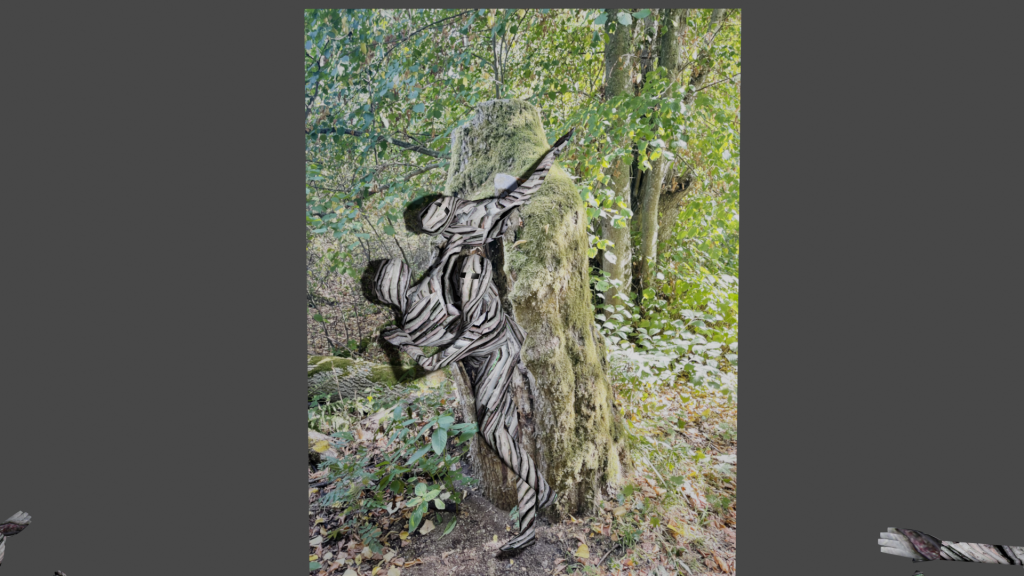
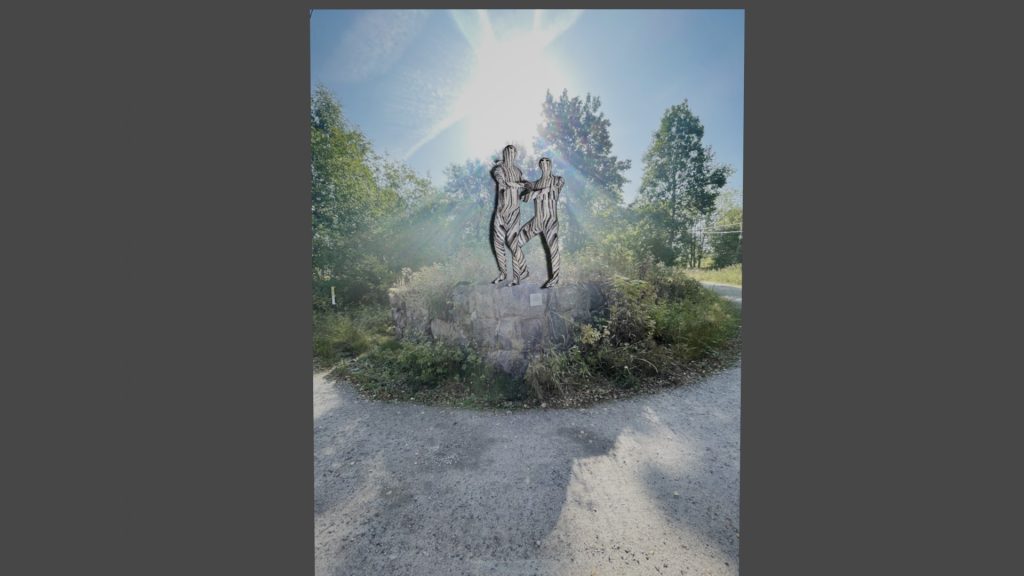

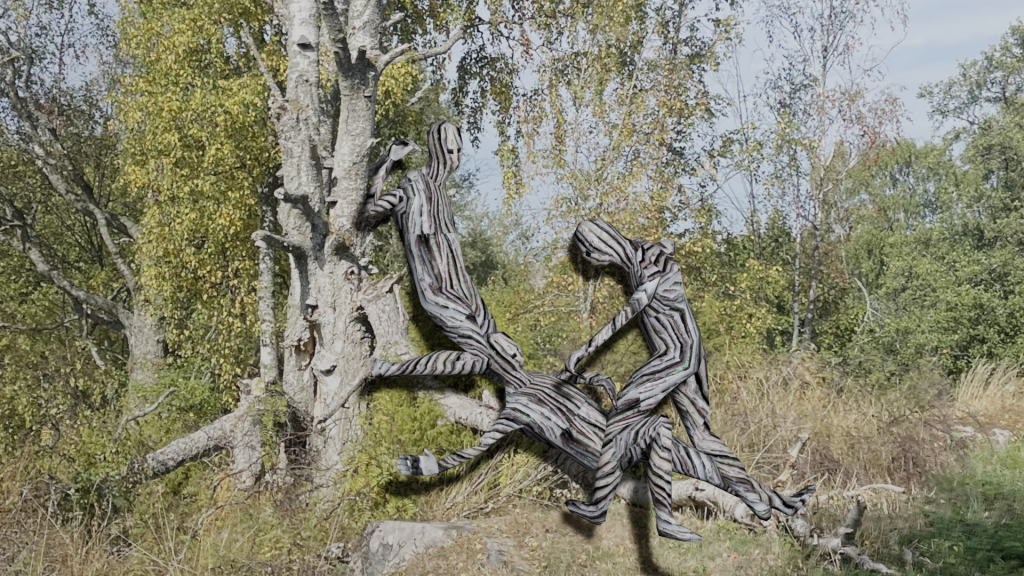
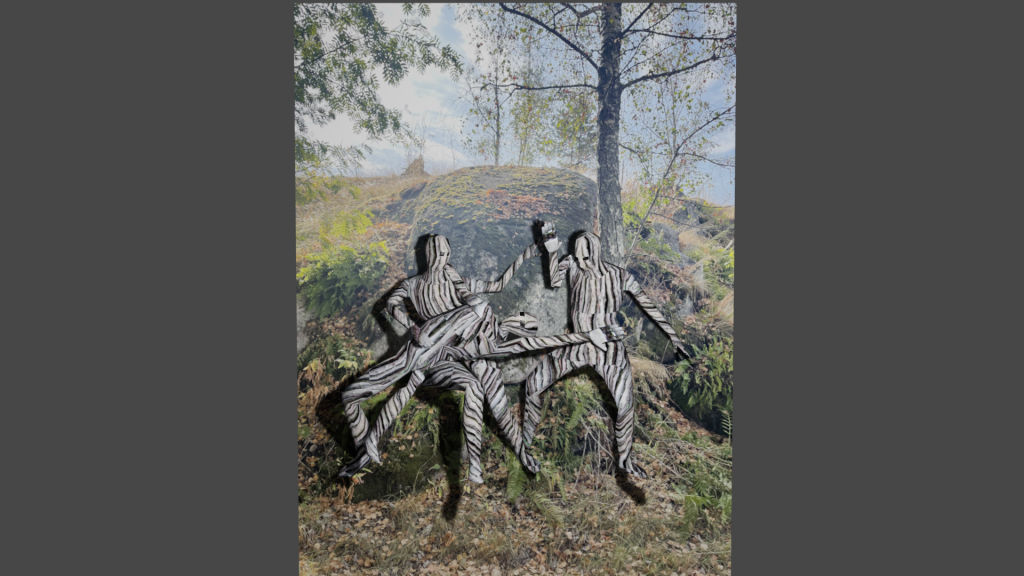
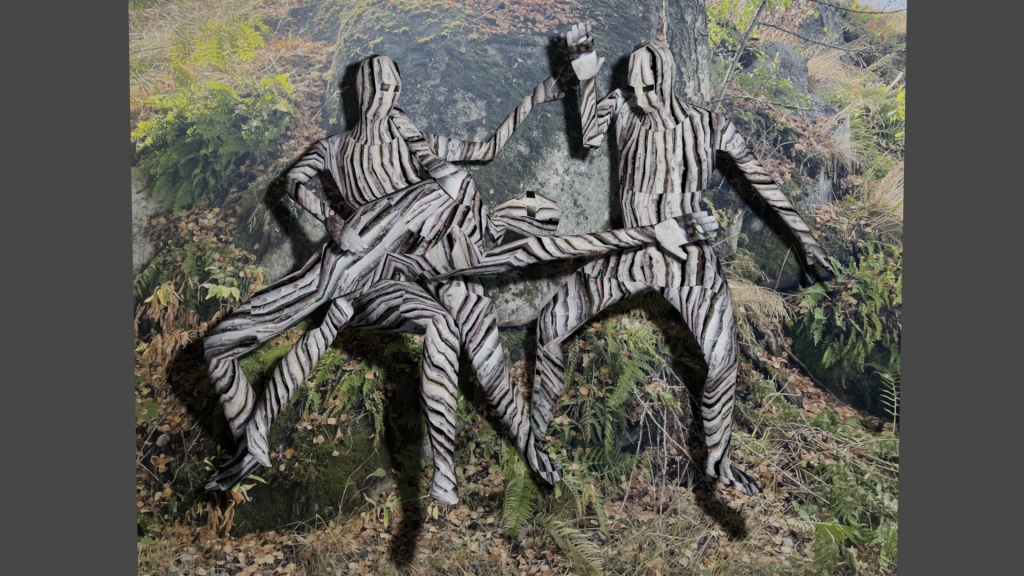


a voice note mixed with choir singing
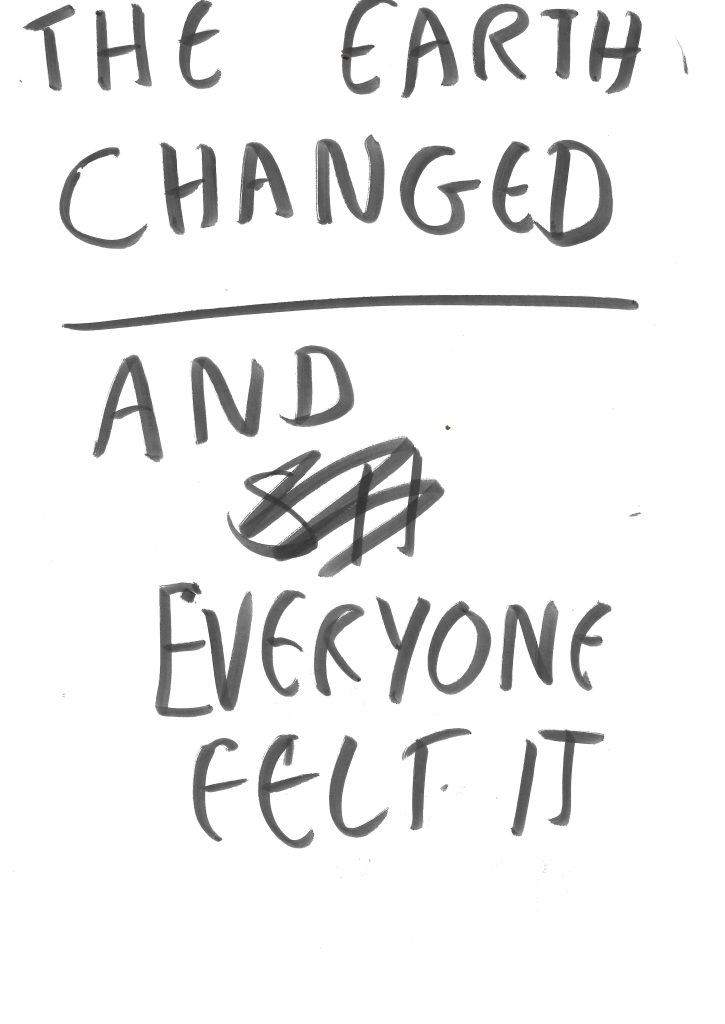
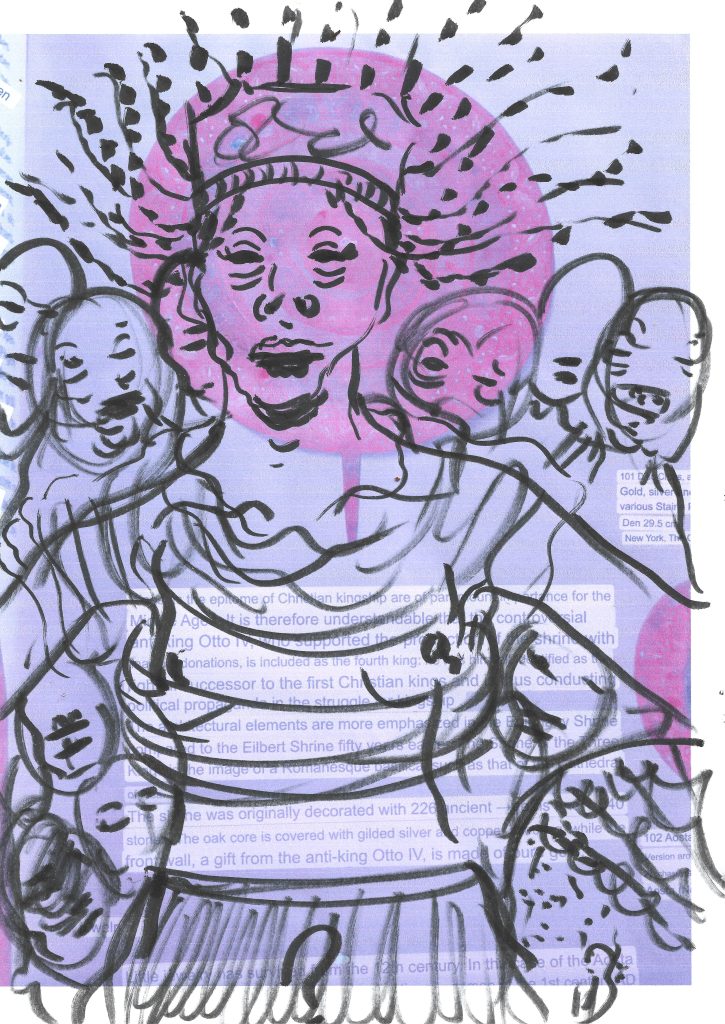
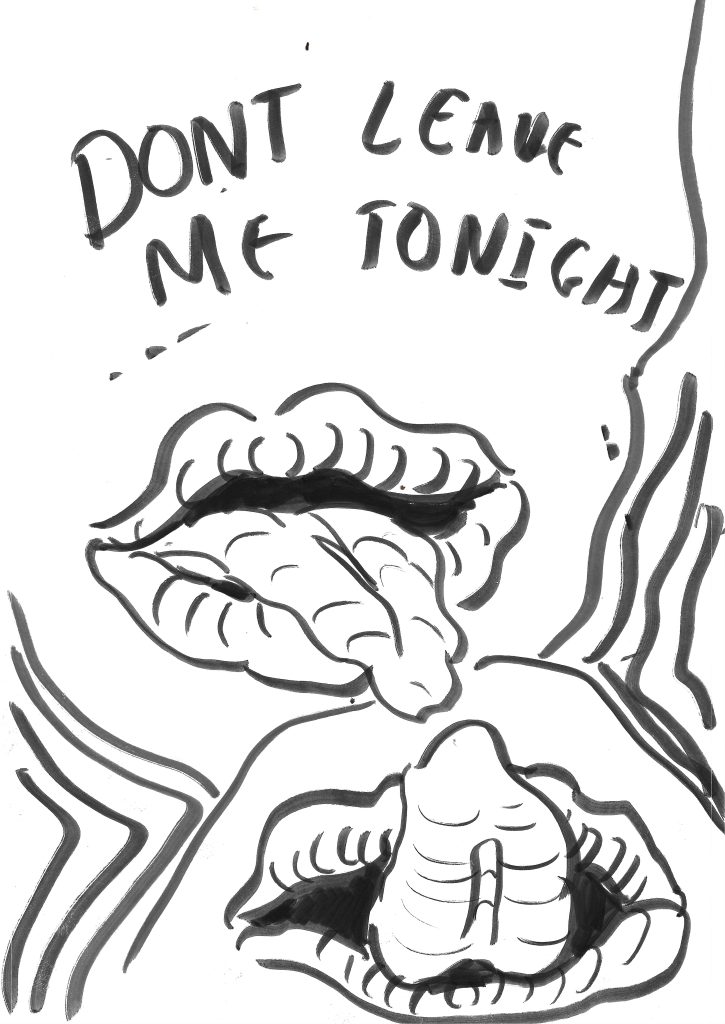
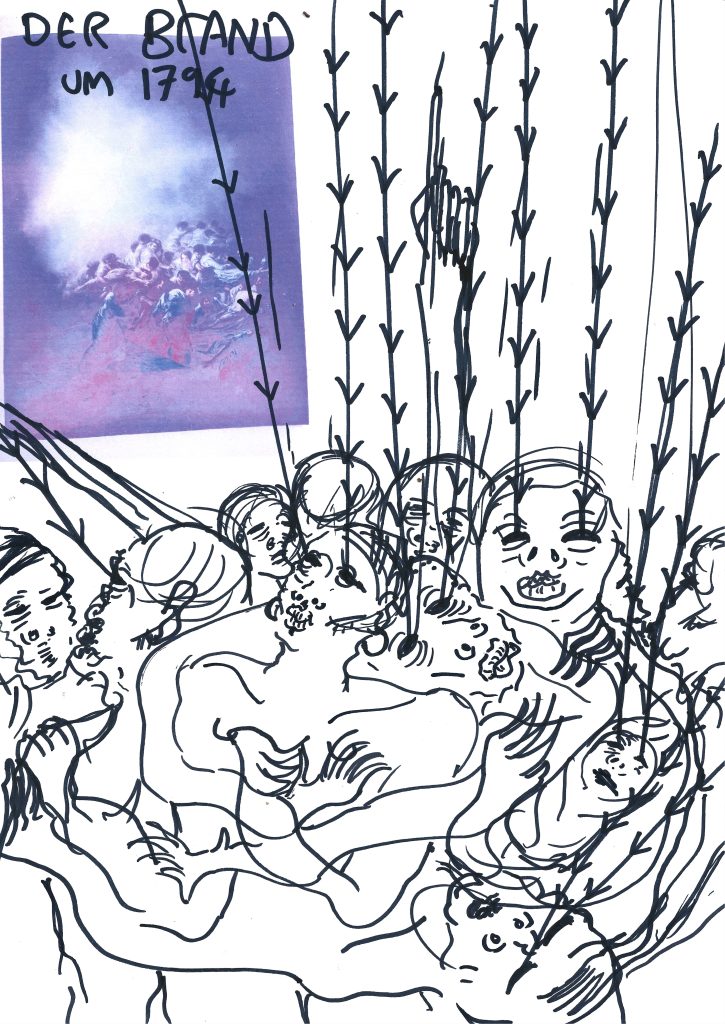
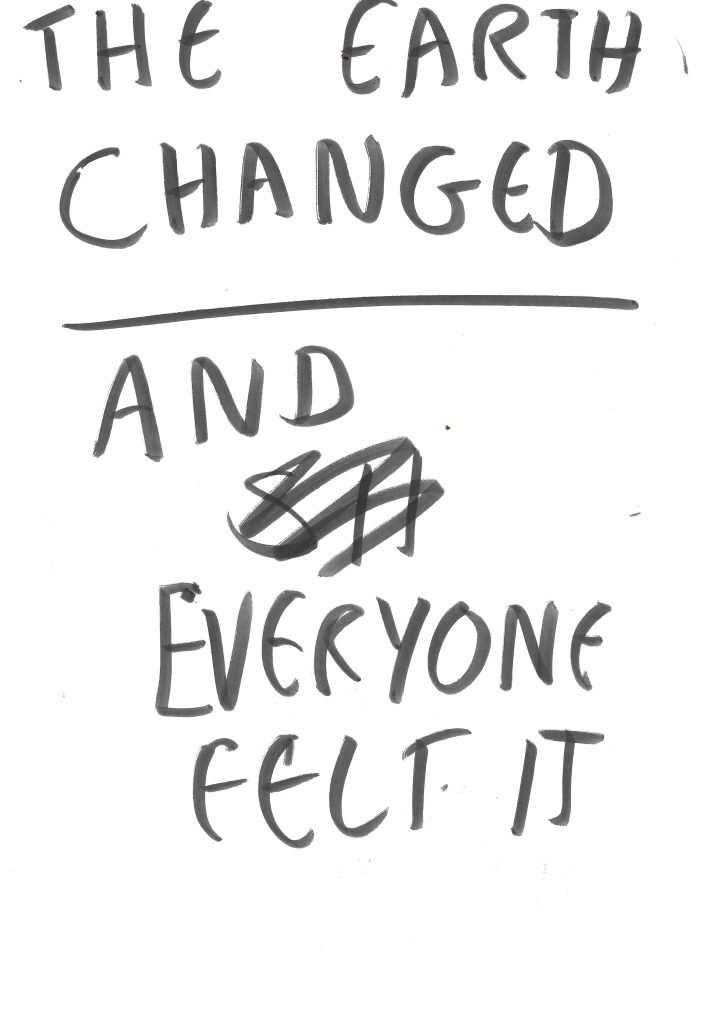
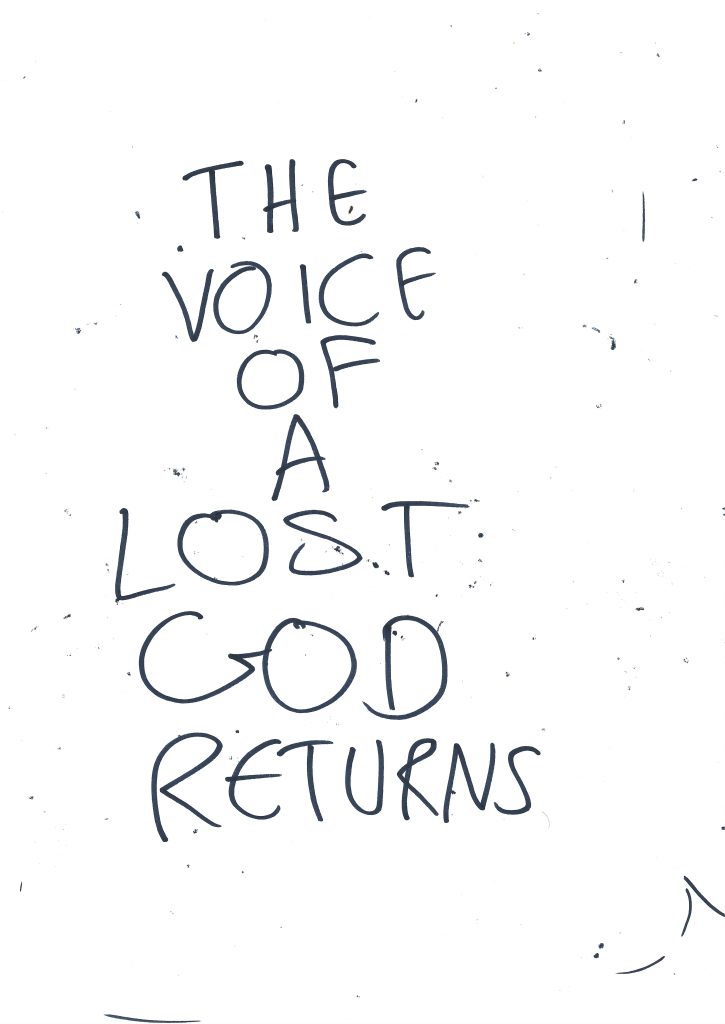
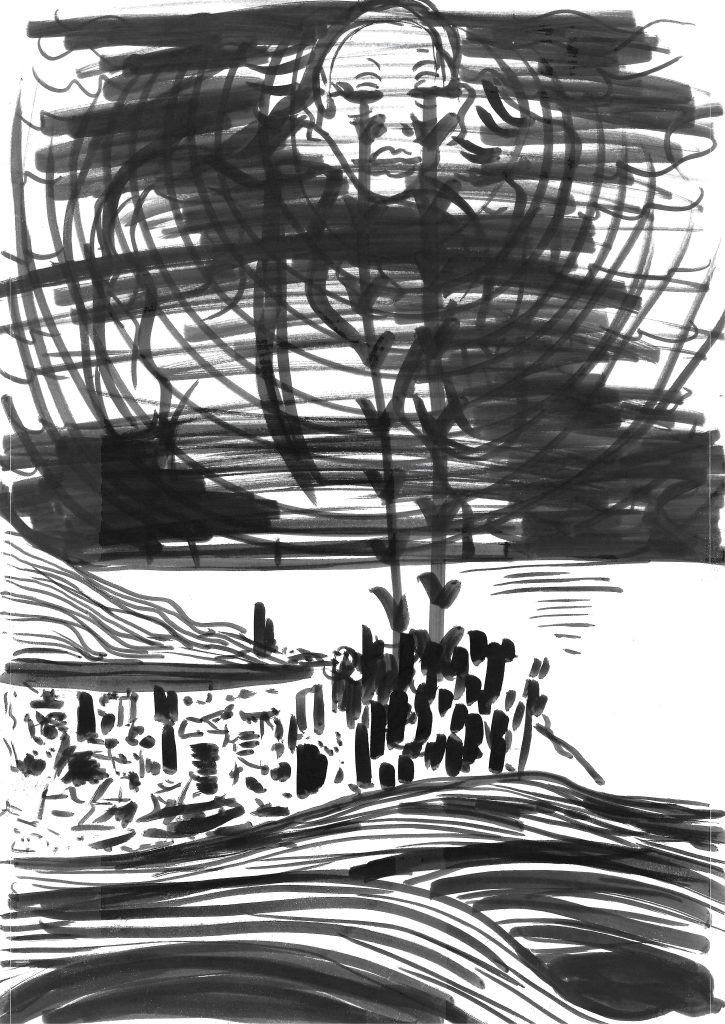
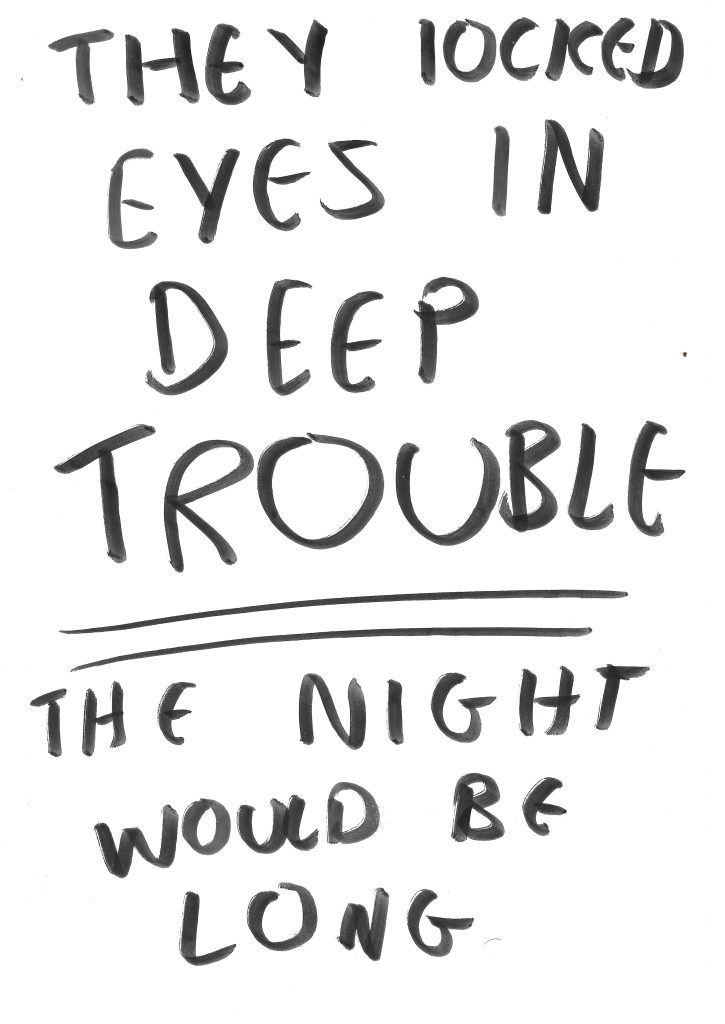
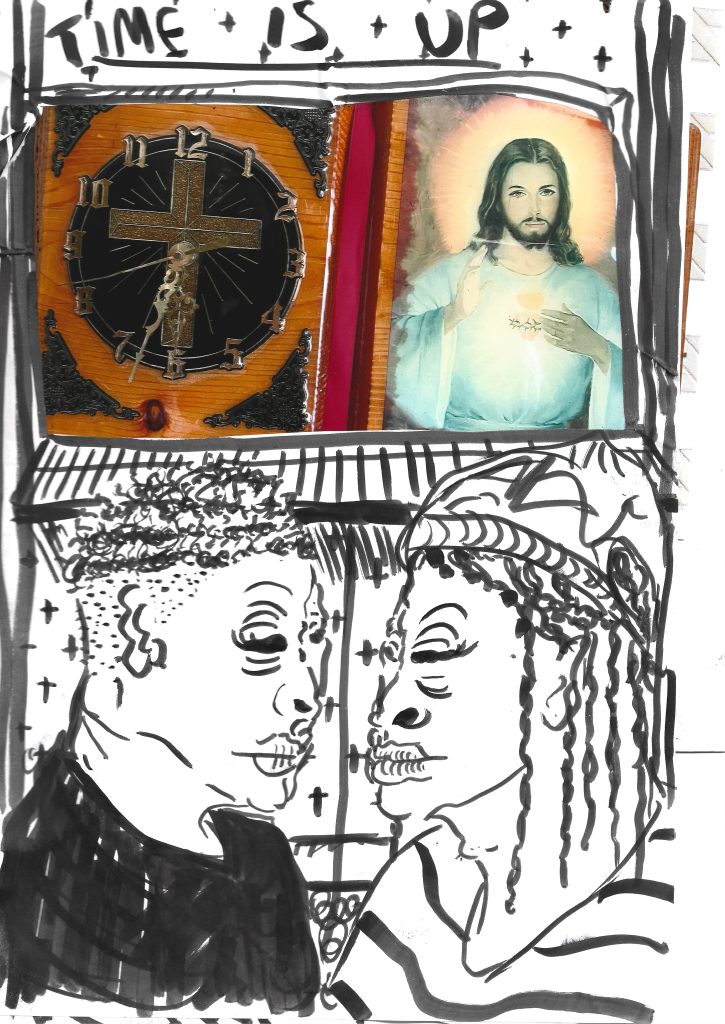
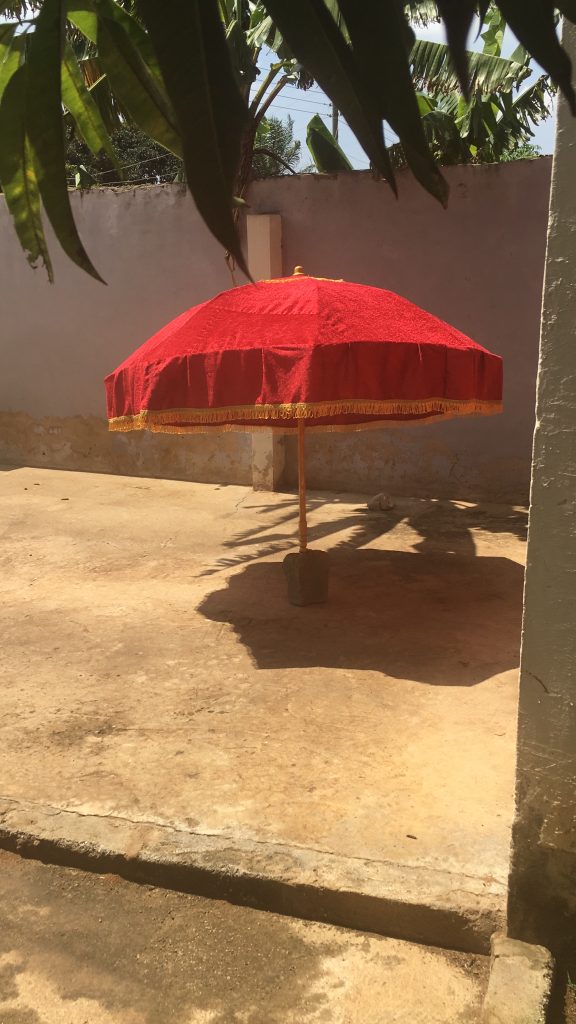
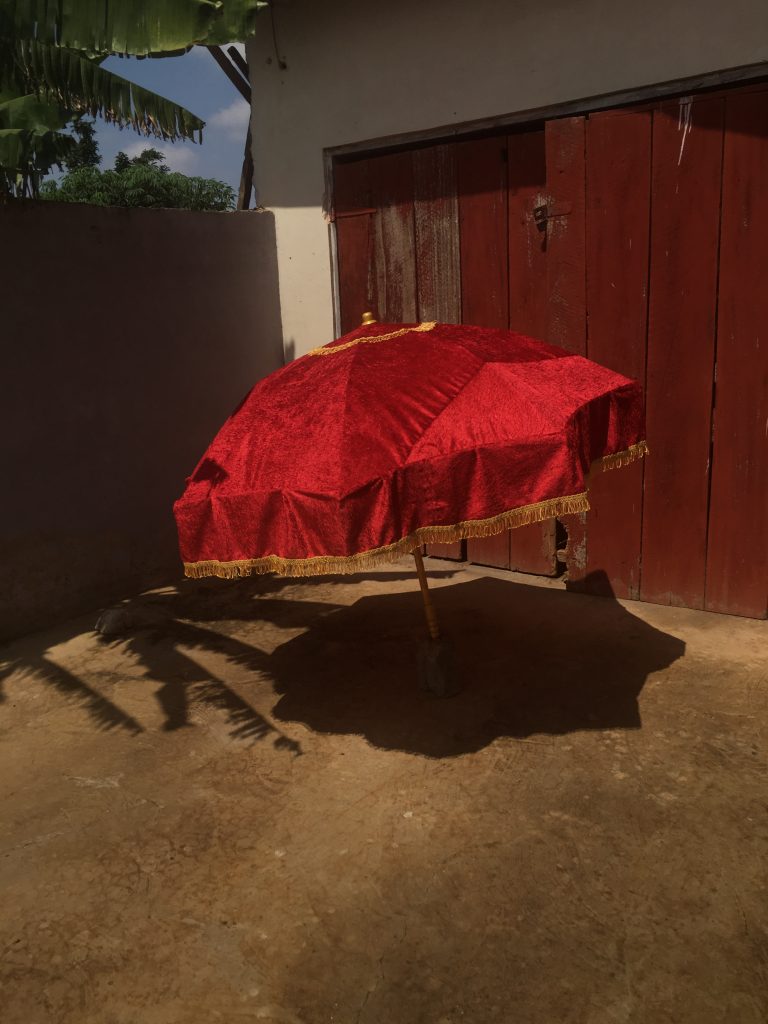
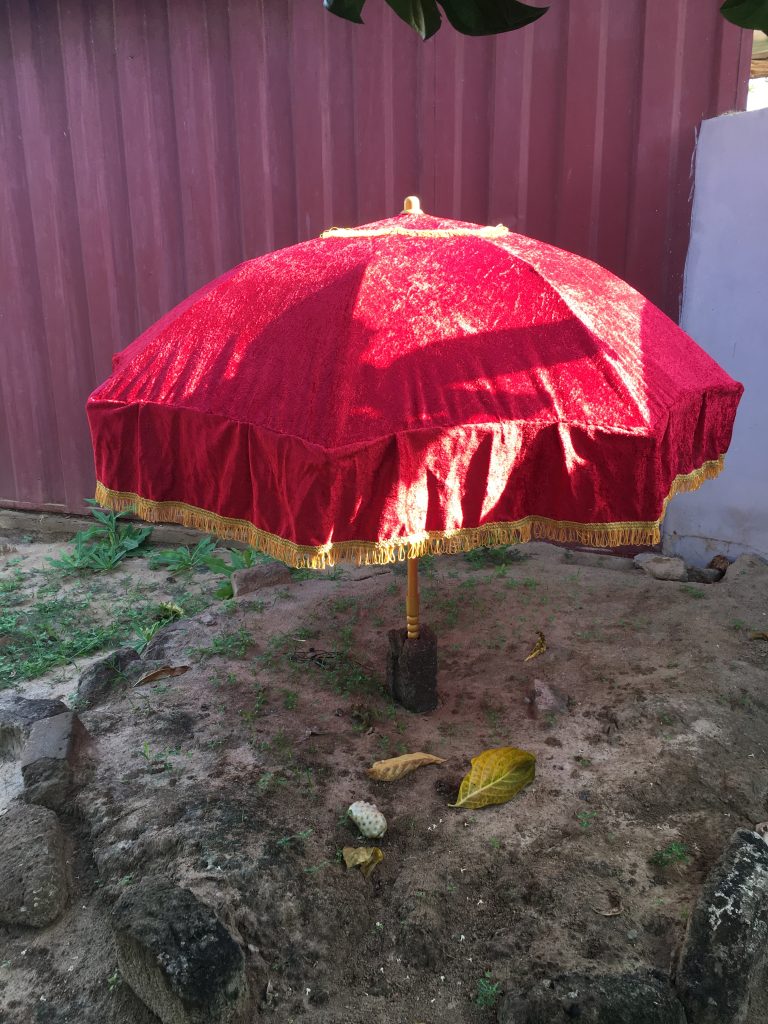
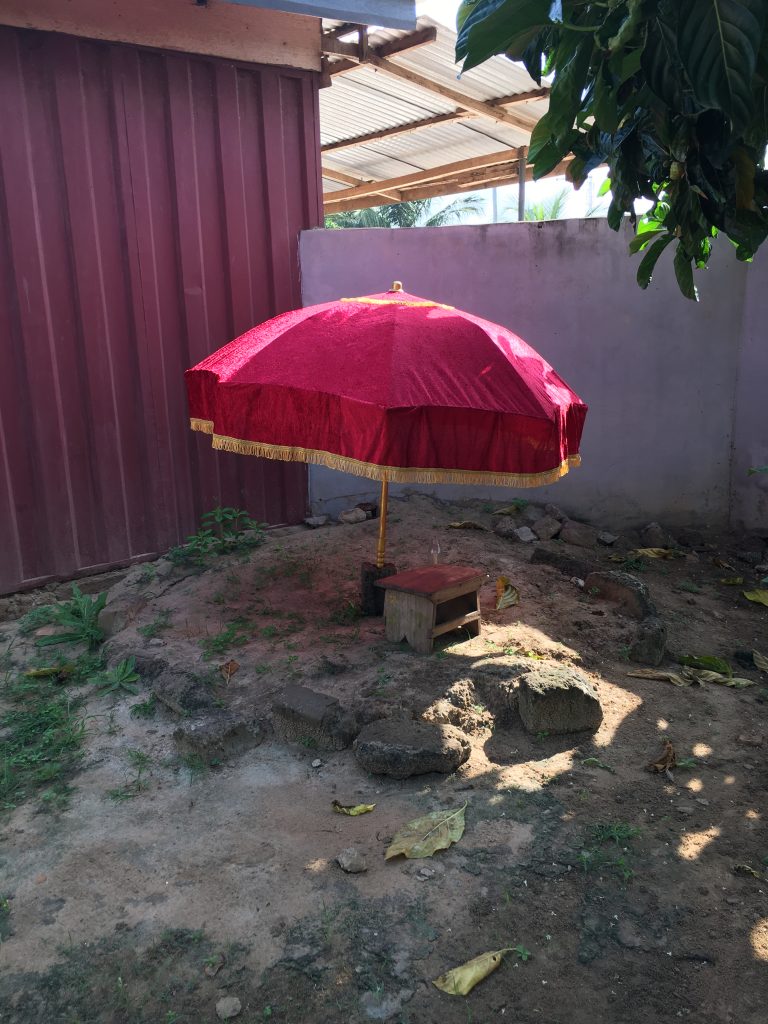
I believe that objects can possess spiritual energy. This umbrella is one of them. It is a Ghanaian Royal Umbrella and made for the kings and Queens. These are not just for shelter from the west African heat but function as symbolism. The artist designs and collaborates with the King/Queen and enriches it with contemporary and specific symbolism. T
The Royal umbrella is handmade with high-grade materials and depicts royal levels to the public.
I was fortunate to find an artist that makes Royal Ceremony umbrellas. The umbrella I have has the spirit of a Queen Mother. It is red with gold fringing. This spirit is present through the experience of building this shrine.
This week I have been changing this umbrella. I am transforming the umbrella into a shrine for the transgender deity I am envisioning. I will share the images at a later stage.
continuing to sketch > < continuing to sketch
visible roots left in the ground > < follow up for the tree
tabla tabla strings and vocals >
a call to recent studies >
video description: set to another Lollywood classic, this short clip splits the screen into two separate panels. Each one follows the camera movement from dead roots laid in the grass upward to a living tree and then up again to the blue sky – the movement is from grey decay to lush green and blue life. As the intro to the song finishes and the first vocal is about to drop in, the image pauses for a brief moment…two tabla-like images appear side to side. Both are rotating circles with an inner circle of a blackened wood texture, made to appear like the syahi, the central point of the tabla skin. Both rotating circles give the sense of vinyl records being played, with the outer ring on both circles featuring two distinct family images. One is of my two grandfathers sternly sizing each other up. The other is of my grandmother and her best friend sizing up the camera. As the song continues and fades out, the images are taken away by a burning line across the screen.
For a new online work, I’m creating a radar visualisation in which each of the dots will be assigned an image and text that reads ‘I AM NOT TARGET PRACTICE’.
The images that I’m hoping to incorporate are of cloud data centres run by AWS, Google, Microsoft, IBM, and Oracle. I took screenshots using imagery from the ESRI satellite and focused on the data centres in Virginia because it has the highest density of such places in the world.
I’m planning on overlaying these images with cloud satellite imagery so the view of them is partially obscured.
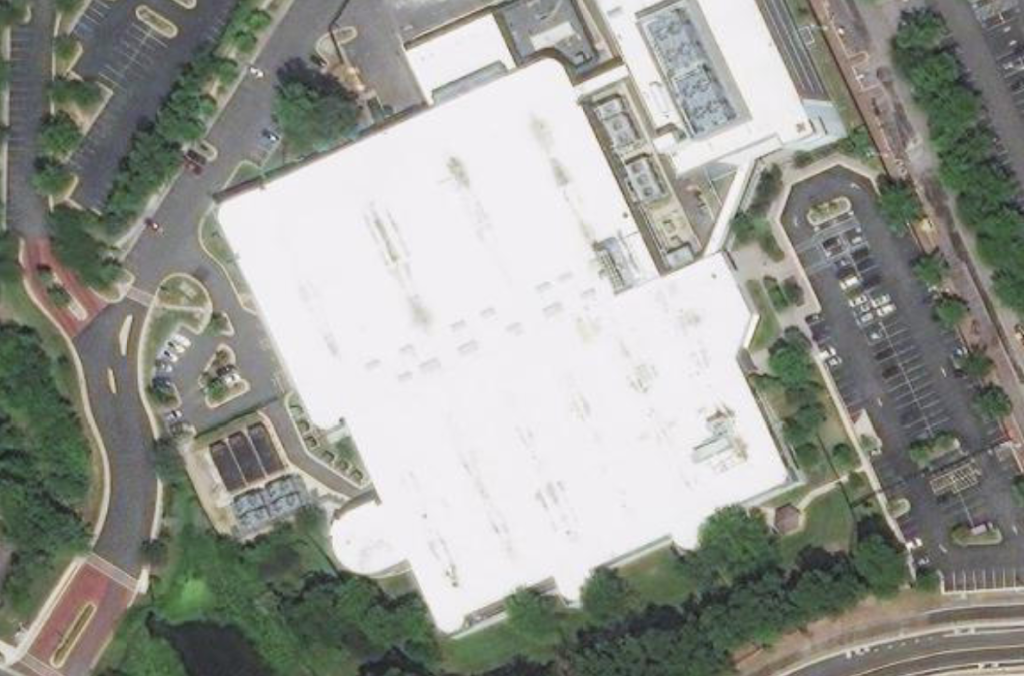
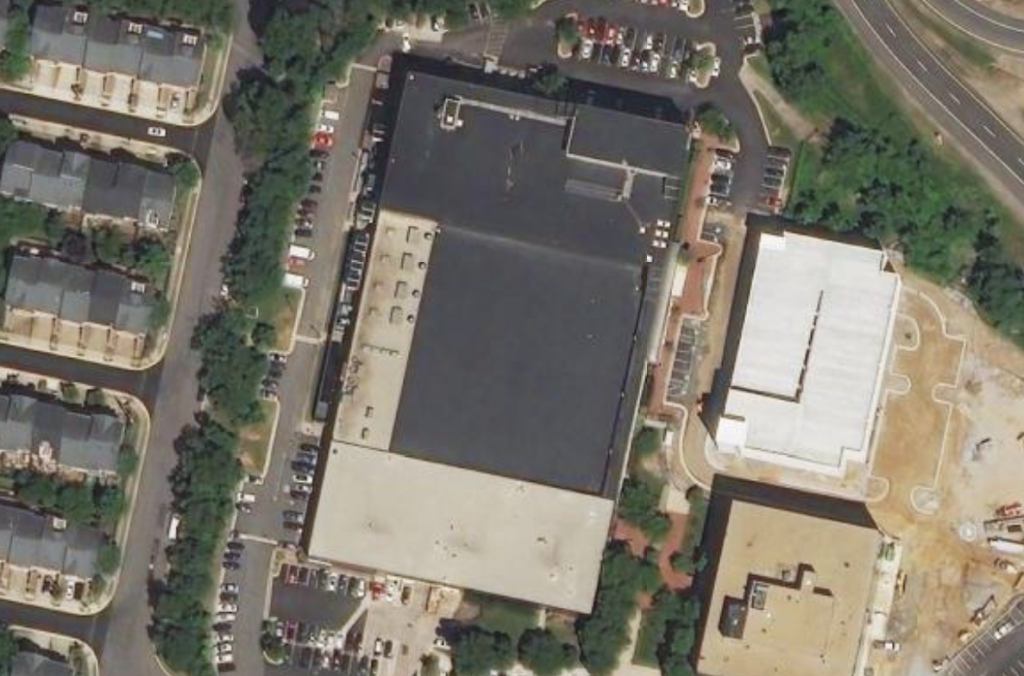
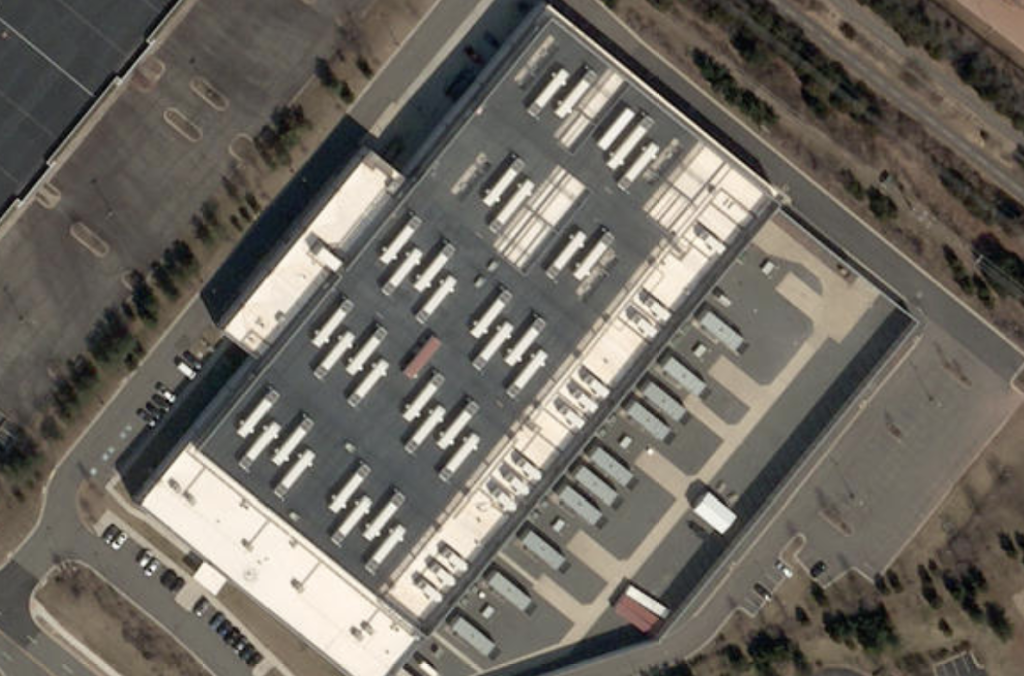
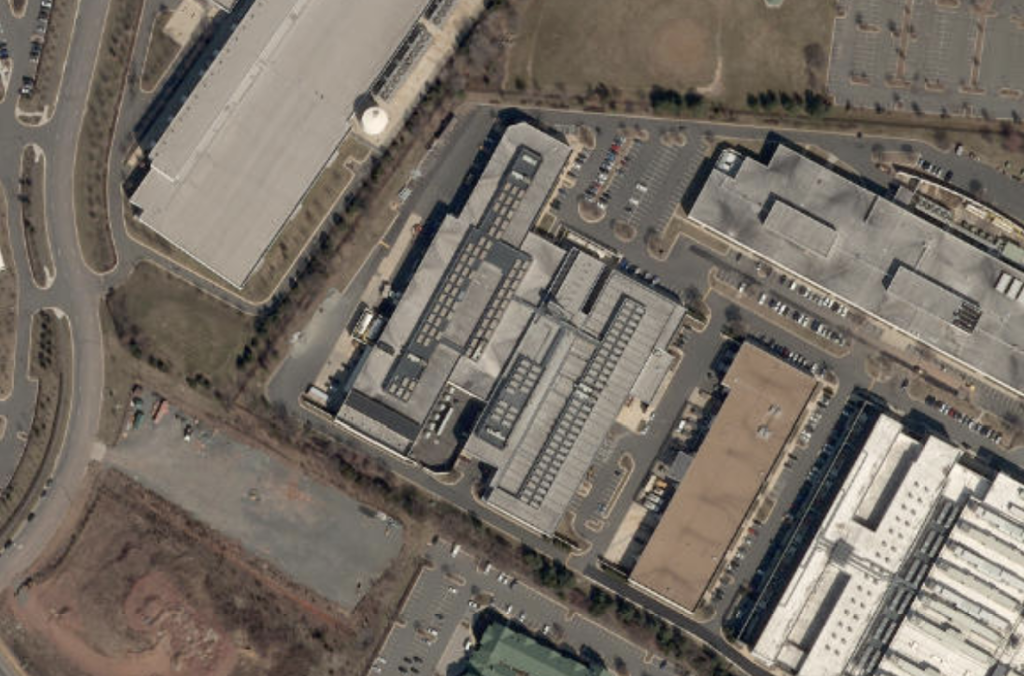
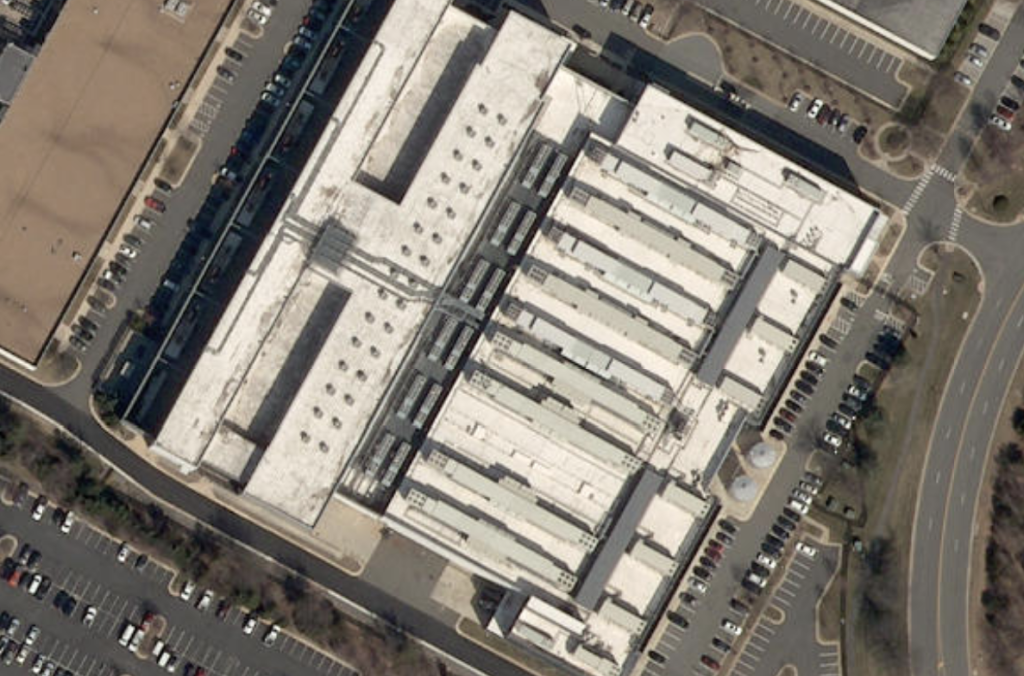
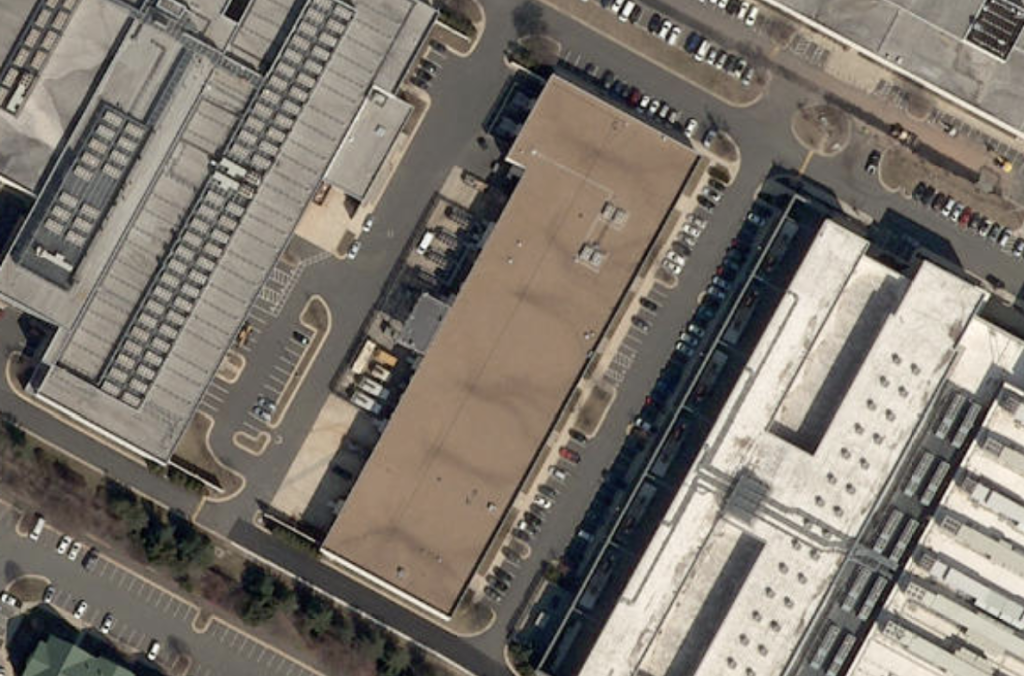
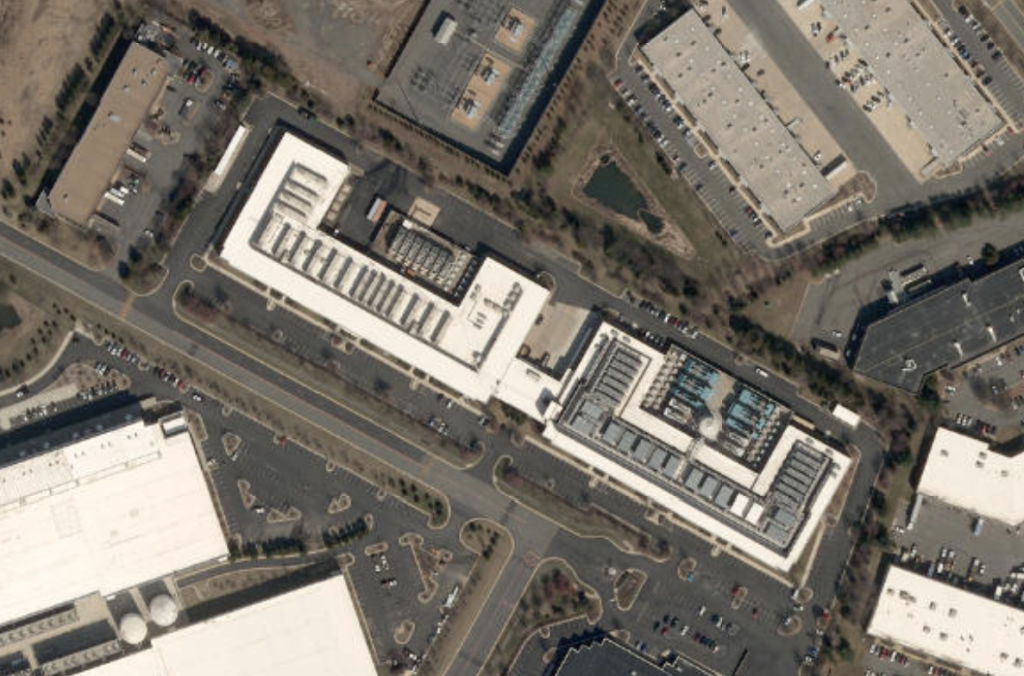
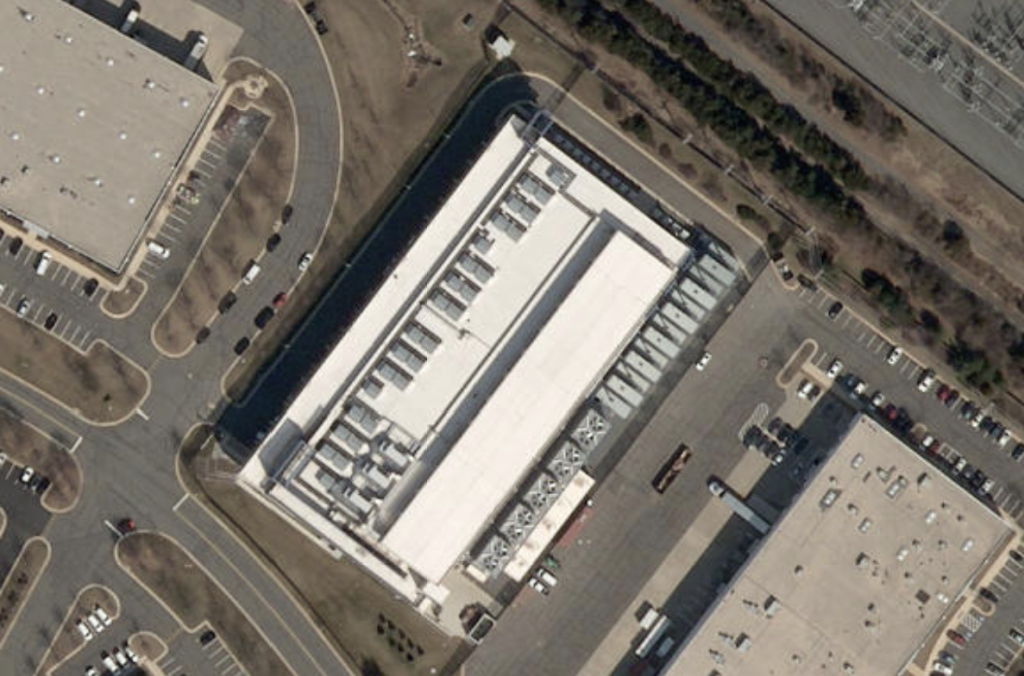
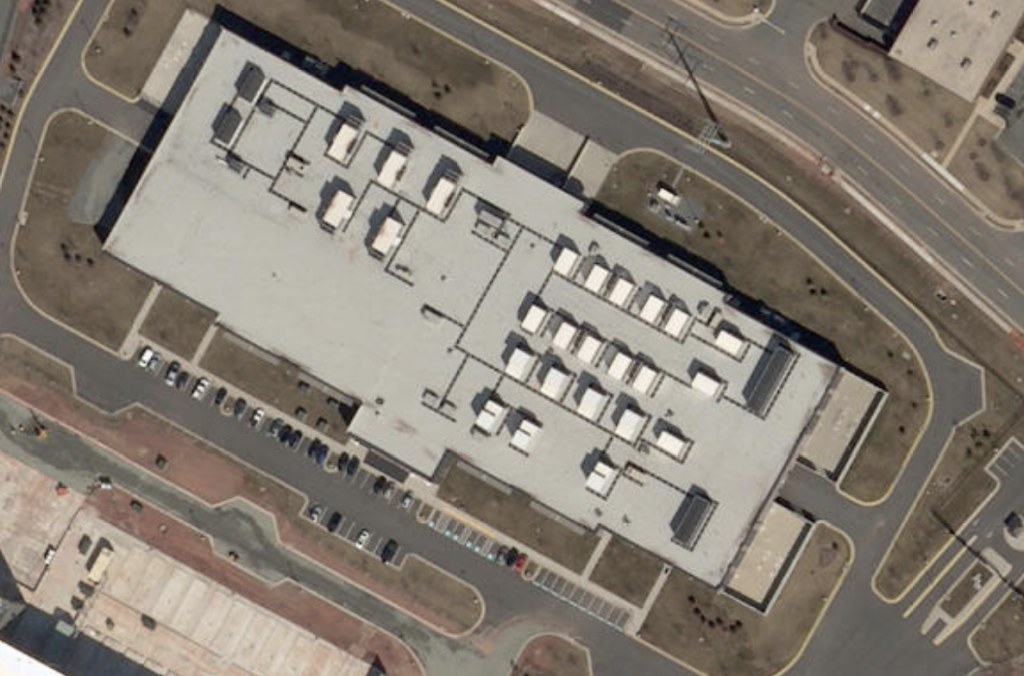
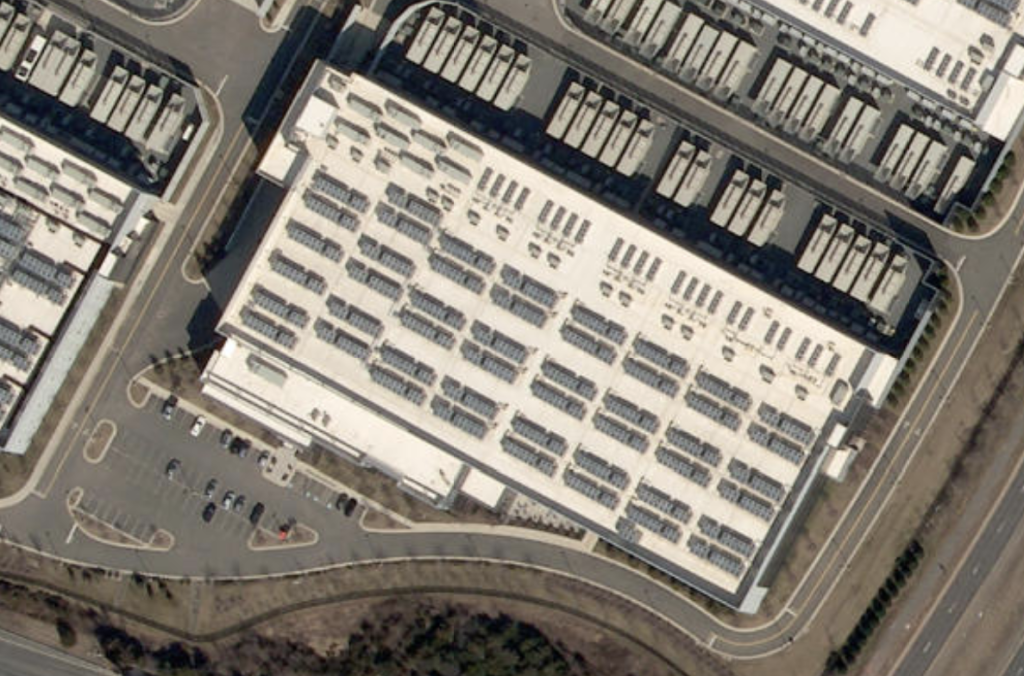
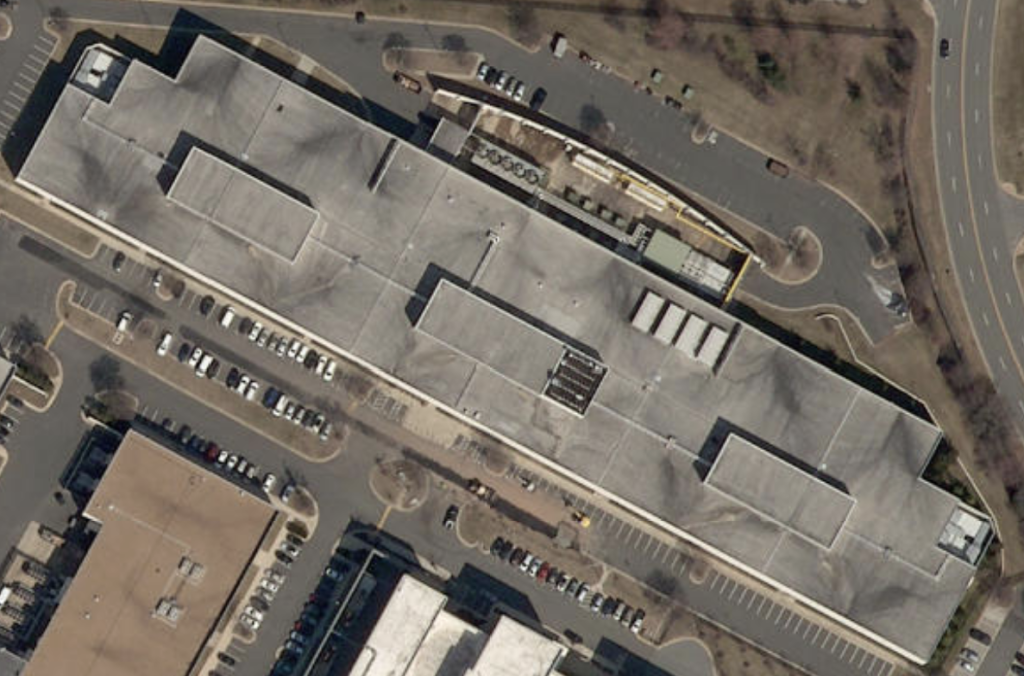
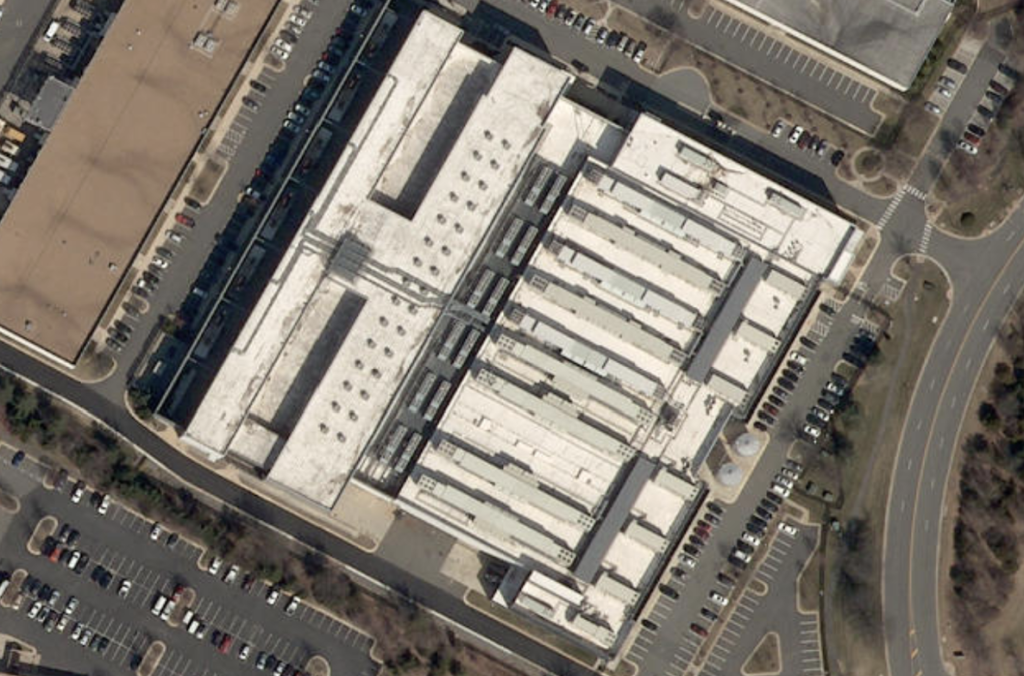
(Alt text for image gallery: satellite imagery of data centres, many are angular and white with fans mounted on the roof).
OKO is the early warning system
The type of satellite is Upravlyaemy Sputnik Kontinentalny, or US-K.
These form the Kosmos system (which I have also seen spelt Cosmos).
‘The satellites are drum-shaped, 2 metres long with a diameter of 1.7 m. They weigh 1,250 kilograms without fuel and 2,400 kilograms when fully loaded. They have a 350 kg infrared telescope pointing toward Earth, with a 4 m conical sunshield and an instrument bus. The telescope, which is the satellites’ main instrument, is able to detect radiation from ascending missiles.’
Kosmos has a total of 101 satellites launched between 1972 and 2012, according to Wiki.
The last US-K satellite (Kosmos 2469) was launched on 30 September 2010. As of December 2015, the entire OKO programme is being replaced by the new EKS (or Tundra) satellites and the Kupol system.‘Reportedly the Tundra satellites carry also a secure emergency communications payload to be used in case of a nuclear war.’ I think there are six in orbit, with another launching this year. https://space.skyrocket.de/doc_sdat/tundra.htm
The satellites rely on infrared sensors that can directly detect radiation emitted by a missile plume.
An over-the-horizon (OTH) radar, like all radars, detects reflections of electromagnetic signal that it sends in the direction of a target. OTH radars deployed on the Soviet territory were able to detect missile launches on the territory of the United States by using reflections of electromagnetic impulses from Earth’s ionosphere.
The system began limited operations in 1978 and was placed on combat duty in 1982 (so it was very new when the 1983 incident occurred).
The bunker in Serpukhov-15 includes antennas to communicate with the satellites.
Launches of early-warning satellites into highly elliptical orbits are performed by Molniya-M launchers from the Plesetsk launch site in northern Russia.
An amazing website for tracking satellites http://www.satflare.com/home.asp
The full list of satellites in the Kosmos system https://space.skyrocket.de/doc_sdat/us-k.htm

Nye Thompson has begun some new research around satellites, especially decommissioned ones, for an online residency with Mostyn Gallery.
This is the summary:
‘Far above, over our heads a hidden choreography of national and commercial power struggles is playing out. Military, communications, GPS, imaging, monitoring, surveillance – satellites live fast and hard. Existence maintaining baseline performance in the New Frontier is precarious.
Alongside them are the ghosts – thousands of decommissioned siblings that have outlived their usefulness. They will tumble along their graveyard orbits for years or centuries before they hit the atmosphere and burn.’
Nye kindly pointed me in direction of the Kosmos system of satellites which was used in the OKO early warning system I’m researching!
https://mostyn.org/event/the-time-before-the-fire/
https://www.instagram.com/p/Cg1RaZ2DX-T/?utm_source=ig_web_copy_link
Some Depressing voice notes
I was going to post my voice notes that I made to capture a tone I needed in the work I am making but actually, I dont want to share these with anyone until I am ready so I am not posting them all but Ill post one.
Im using my voice notes to try and process my feelings
Michael Landy
A British conceptual and installation artist born in Ilford.
Landy is best known for Break Down, a performance piece where he categorically destroyed all of his possessions in a disused C&A on Oxford St. It has been widely read as a critique of consumerism, following on from early work of his that overtly criticises a growing consumerist ethic. I think the work contains an inner dimension that allows for a deep denial of materiality (not just material), making it spiritual and ascetic. The work was visceral and emotional for Landy.

After ‘Break Down’ he took a hiatus from making art before returning with Semi-detached. The latter is a lesser known work of his but I find it conceptually important that after destroying all of his possessions that he felt the need to recreate his home. This house is such a ubiquitous image in Ilford and witnessing it in the gallery space gives me mixed feelings. In some ways, the work seems to be a direct discussion about the area, home and Landy’s personal history. Mobilising the aesthetic feels representative. The work engages in a kind of elevation of normality. An edification of all of the processes of house-building: window fitting, door framing, coving, roofing etc. While obviously not unique to Ilford, this building is a complete replica that brings Ilford into the gallery space and it makes the address in Ilford another site of the work.

In other ways, the work misses an opportunity to have a discussion about how dynamic Ilford is as an area. The focus is on a frozen moment in the artists history and does not engage more widely in the creation of place. The neighbours, the local supermarket, the high street, the bus stop, the local park. These aspects of home-place-making are all conspicuously absent from the work.
Anyway, the work is actually all about Landy’s dad who was confined to the house after a mining accident in 1976. It’s about his father’s incapacitation and a reflection of working class conditions in 1970s Britain. So of course, it isn’t about Ilford at all neither elevating its normality nor missing its dynamism but keeping a focus on the father-figure. In some ways, Landy’s work is about ancestry and those who have come before. The excerpt from a Guardian interview with the artist below strings together the relationship between Break Down and Semi-detatchced.
“One object that Landy didn’t destroy until right at the end, which went round and round the conveyor like an unclaimed suitcase, was a big old sheepskin jacket – his dad’s. “My mother had bought it on credit just before he had his industrial accident. After that, it became too heavy for him to wear any more. She still had to pay it off. In a sense, this sheepskin coat became him, travelling around on this yellow tray…Landy later made a significant work about his dad, Semi-detached, in which a precise replica of his parents’ Ilford semi was erected in Tate Britain’s Duveen Galleries in 2004. It was the sort of emotionally loaded artwork he couldn’t have imagined making before Break Down. “I was interested in my dad’s value as a human being. What’s rubbish? What’s a weed? Why is my dad a total wreck case? That’s what preoccupies me.””
(( THIS WAS A GREAT REVIEW OF ANOTHER SHOW OF HIS ))
Most recently Landy has been making work about Essex, the county of his and my own birth. Reviled as the capital of countries nouveau-riche, Landy documents the nations view of Essex in his 2021 exhibition Welcome to Essex at the Firstsite Gallery in Colchester. His archive Essexism turns the mirror on a liberal-metropolitan elite who have written about the rise of Essex as a kind of phenomenon. It shows them as frightened of the emergence of a new kind of middle class who do not seek the sanctified sophistication of upper-crust England but use their wealth to adorn themselves while otherwise staying authentic in speech, action and style. While the classism is a clear issue tackled in the work so is the accompanying misogyny.
The construction of the ‘Essex girl’ has been used as a way to demonise young women and label them ‘stupid’ for seeking different kinds of mobility. In the accompanying documentary, Landy meets superstar businesswoman, Amy Childs, who it turns out is his first cousin once removed. He makes a point about their similarity and even uses products of hers in his exhibition as part of the archive.
The work feels authentic, political and as described by Landy himself iconoclastic. I appreciate that he includes his mother in the documentary work, that he explores spaces he knew as a child and that he admits how ignorant he was about Essex throughout most of his life. I feel inspired by how genuine he seems and through reading about his life and work I take away the following lesson:
bringing the family into the frame, forgoing the material, seeking something of home,
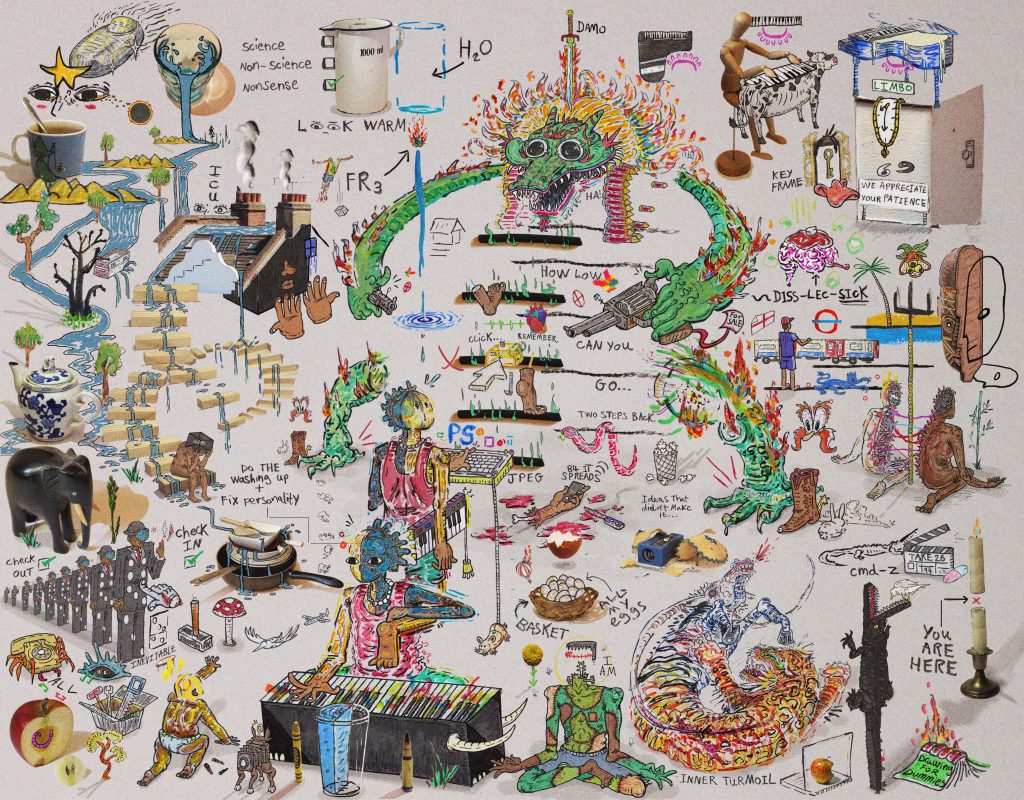
This piece “IN LIMBO” is the second in a series called “Thought Experiment”, a place in the mind similar to a blank page ready to be painted. Where logic is left behind and I simply put pencil to paper and work off instinct till reoccurring themes seem to show up on the page through imagery, telling me what’s on my subconscious mind. The short film I made that documents the process of creating the artwork began to merge with the artwork as the project went on. As both were trying to figure out what the project was about at its core while simultaneously working on them in real time. Realising both were to do with the relationship between images and words was a revelation. And made me realise what I’ve always hated and loved about trying to explain art is that things always feel left unsaid. As I get older I try and embrace this more, realising that explanations always feel incomplete because I see art as a universal visual language that communicates ideas and emotions which words don’t exist for. This project made me realised that I want my artwork to encourage people to stretch their own creativity, similar to a Spot The Difference or Where’s Wolly does for children. I enjoy making the viewer read the drawings and try to see how the images relate and connect using their own creativity. Even if that means seeing interpretations that I didn’t initially mean to be there.
This video shares the journey to visiting holy spaces. It is a JOURNEY!
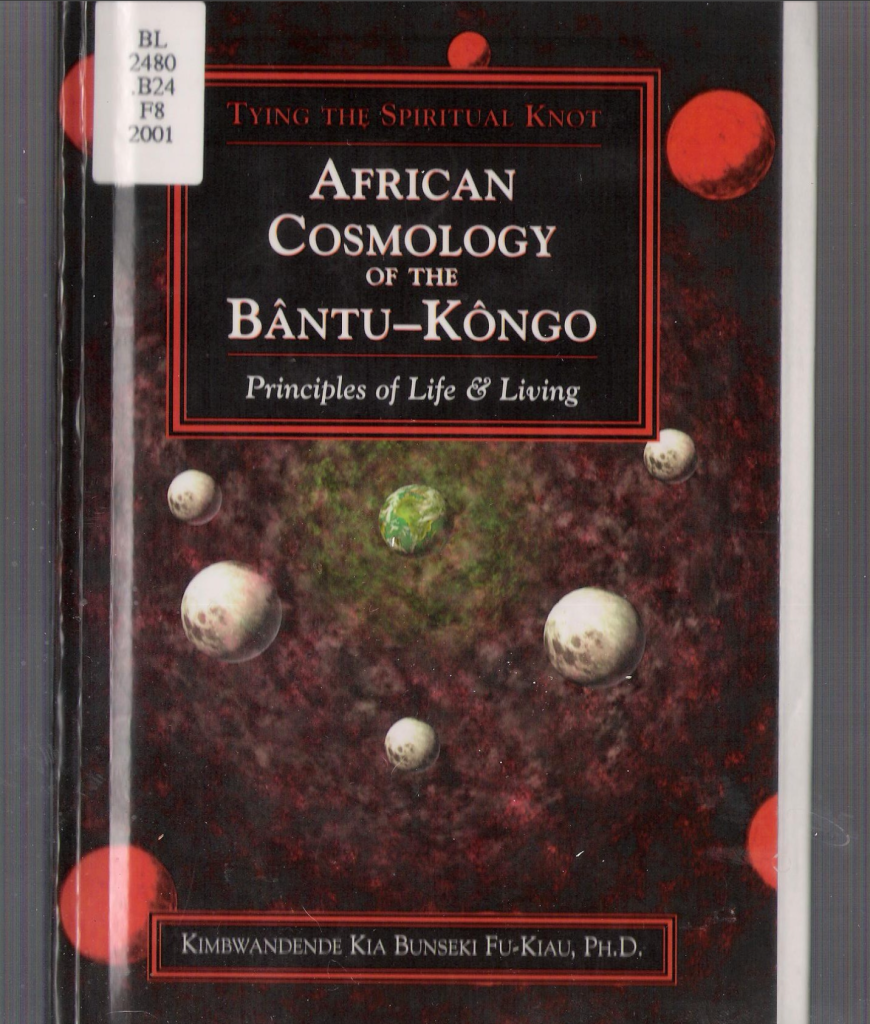
“Mapping the Universe.”
This chapter had graphs and images to show the Bantu Congo understood the creation of the Universe, the function of rituals for creating balance and how medicines(Nkisi) take care of the human being and its surroundings.
The “V” of life inspired how I could be the manifest and control the planes of existence. With this control, I have the spiritual power to create a universe. This is a universe for a transgender deity and the function of being a vessel for transformation.
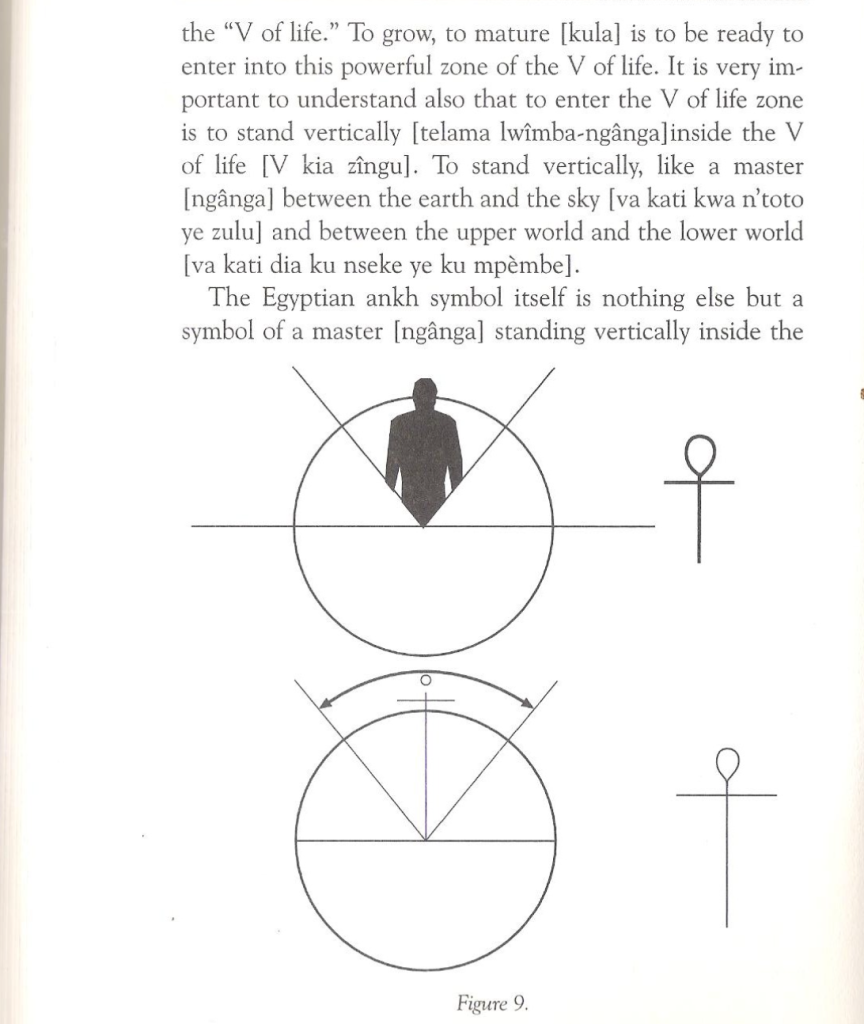
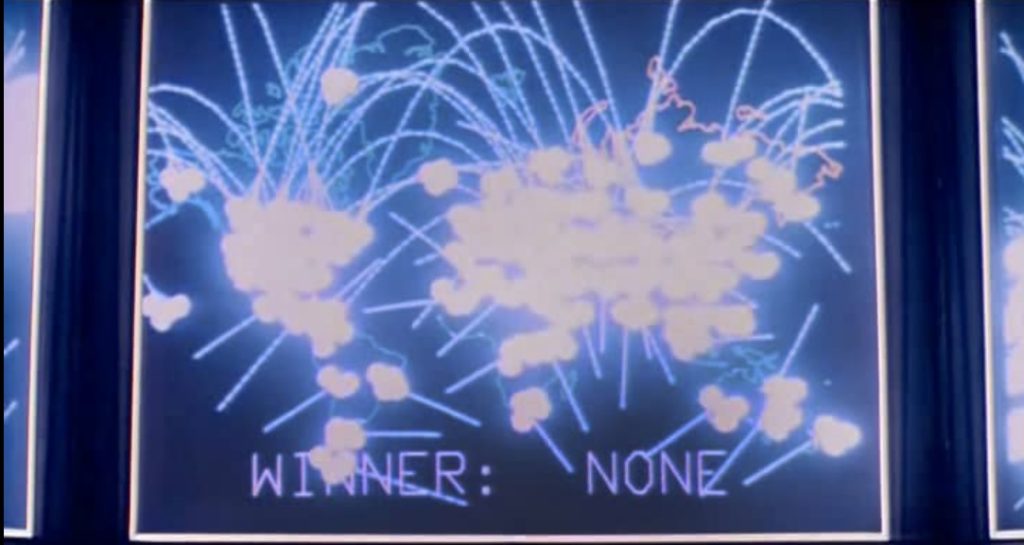
Made in the same year as the Serpukhov-15 incident, Wargames was a film that speculated on the beginnings of accidental war, automated weapons and hackable military facilities. The plot focuses on a high school teenager who discovers a backdoor into the computer that controls America’s nuclear weapons. Thinking it can’t possibly be a real military computer, the teenager at first thinks he’s playing a computer game, unable to comprehend the enormity of global violence now at his fingertips.
The computer itself was designed to replace human workers (those in power don’t want moral judgements and ethics to stand in the way) so it begins to play the ‘game’ back. And once it starts, it won’t stop.
The film’s tagline is ‘the only winning move is not to play’. Against the background of my research interests, it’s reminding me of something I read in Carissa Veliz’s book Privacy is Power: ‘the internet does not allow you to remain silent’ (p230). It is incredibly difficult to opt out of systems of surveillance and networks that amass data for ‘algorithms of oppression’, to borrow a phrase from Safiya Umoja Noble.
The technologies of such systems of control rely on our inputs, which is why the issue of choice is so pertinent.
In the film, choice was looked at through the lens of computer automated weaponry.
Finally, in Wargames, to stop the computer and to avert catastrophic destruction, they have to convince it that continuation is futile. The competitive cycle of input and response must stop. There are no winners in nuclear war.
I’m wondering what I can take away from this in relation to my research. Maybe it’s that there are no winners when huge amounts of the population are criminalised, subjected to limited opportunities, and marginalised and discriminated against by opaque computerised processes.
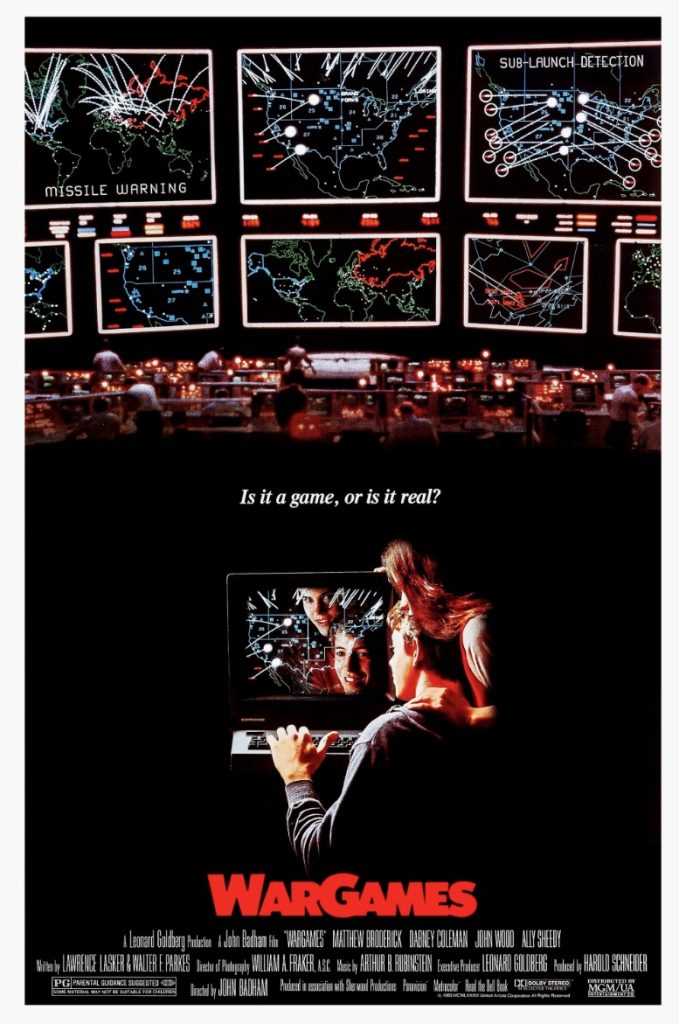
A series of images made by combining maps that show surveillance network Five Eyes locations in the UK and cloud optical thickness.






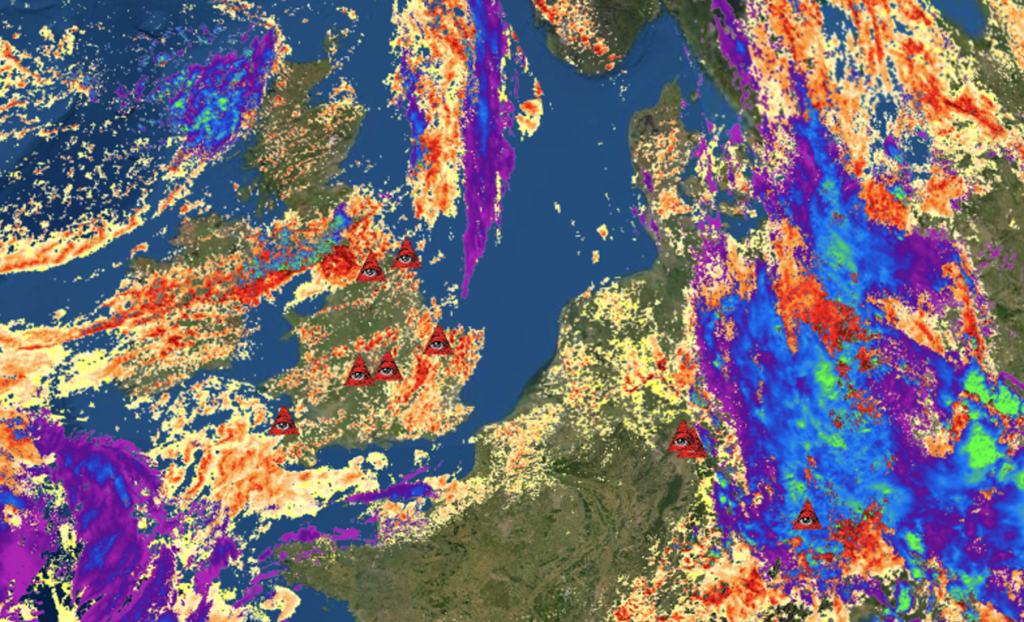

The icon of the red triangle with the eye within it was the default setting in the tool I used to create these images. Note: to change in future.
Looking for a pace of world building that doesnt throws you in the mist of a story
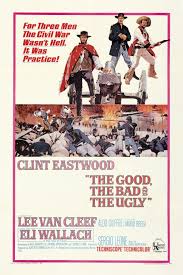
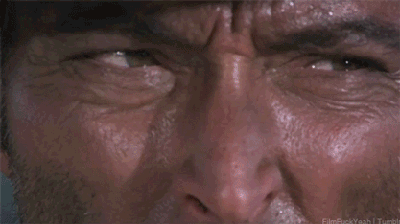
The shots in the film
wow—an amazing sense of scale and movement having history unfold behind the main characters
Morally grey
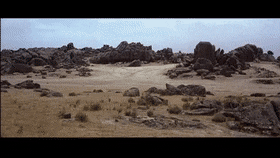
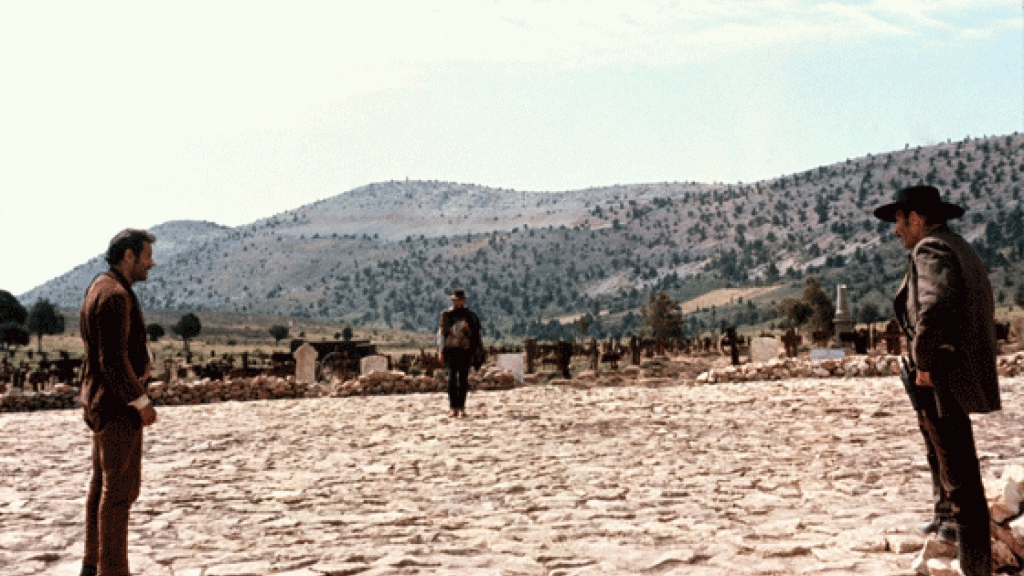
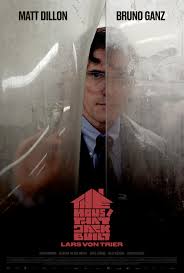
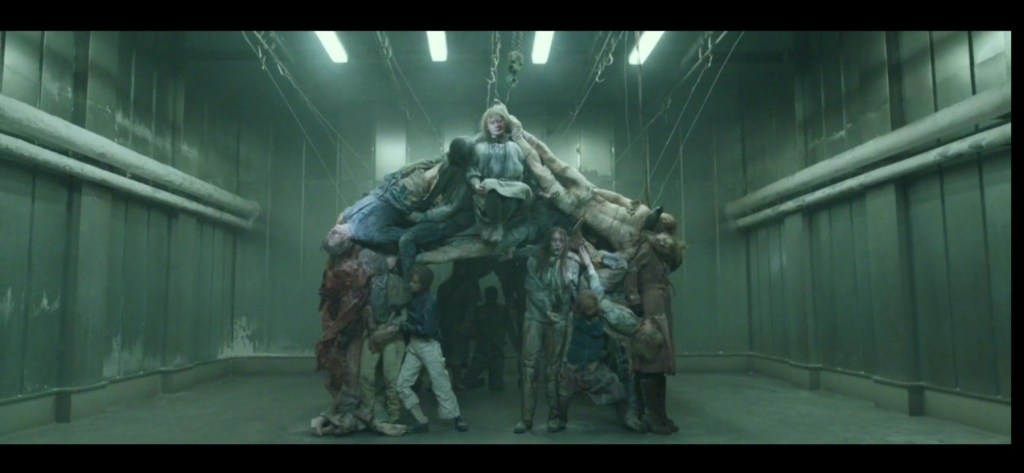
wild film
horrible really
loved the slomo painting shots
These could go on forever
i winder if the episodes can have a visual like this
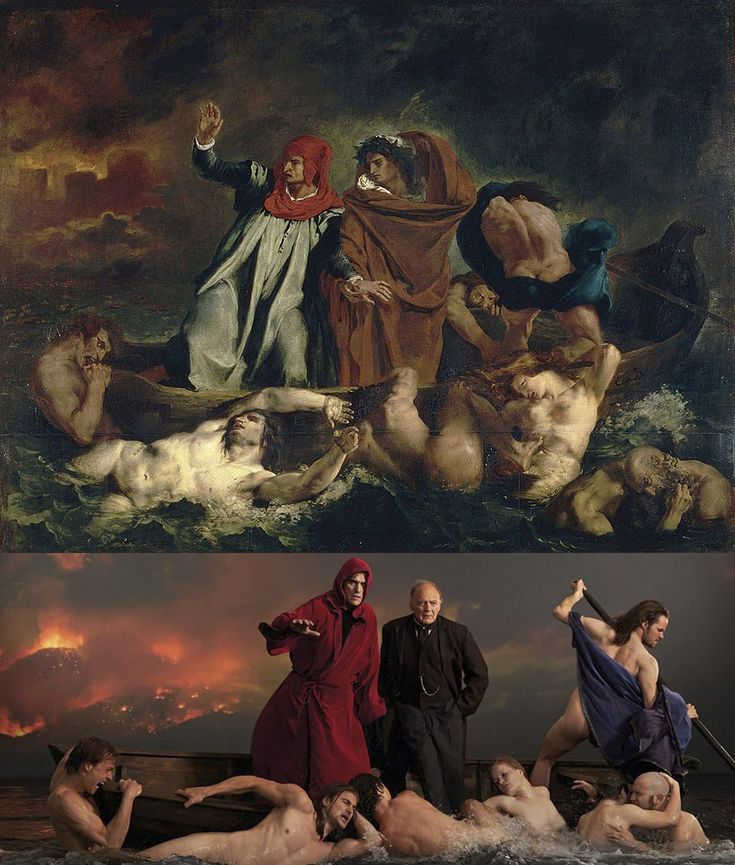
slow but progressing somewhere

I am currently researching into artists from Ilford. (Ilford is one answer to where I’m from)
Gillian Wise was a British visual artist born in Ilford. She was part of the English Constructivist movement of the 1950s before becoming a key member of the Systems group.
“Her work follows the principles of experimentation and reduction to elemental units (line, colour, and plane). Her structures play on the effects of the geometry of light and industrial materials, as well as contrasts between transparency and the primary colours.” – aware
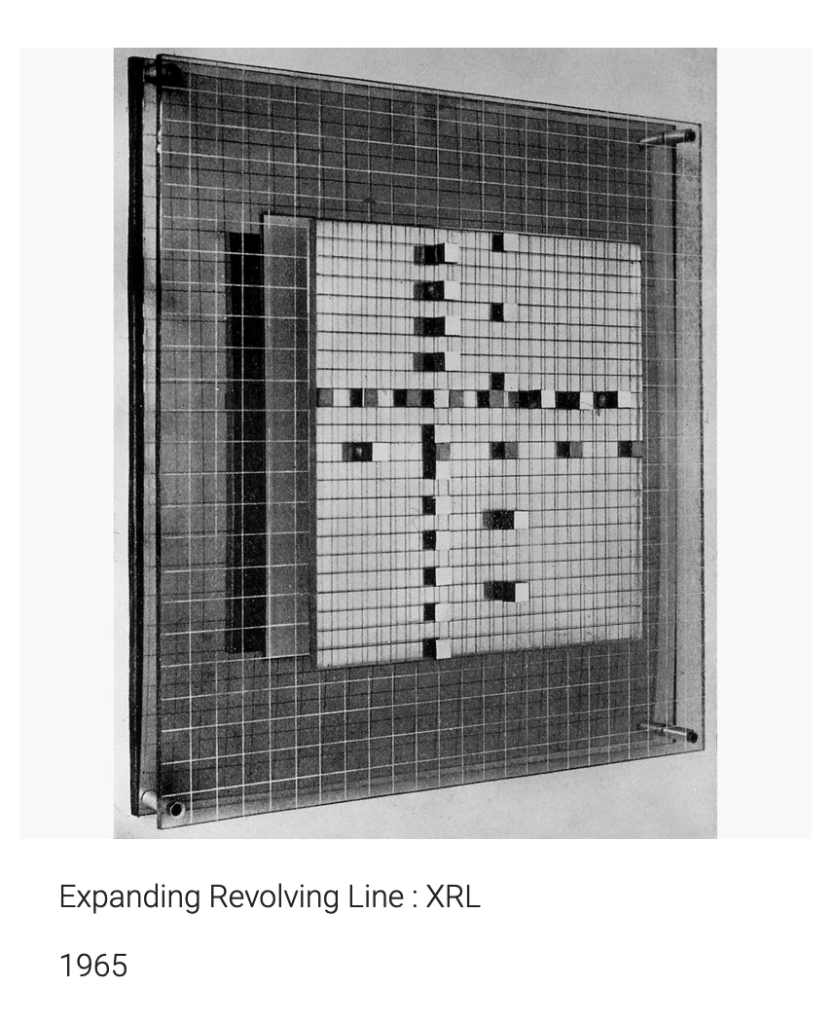
Gillian Wise was born in Ilford in 1936. She grew up in Ilford until leaving the area to study at 18 in Wimbledon. She exhibited as part of the British constructivists and became their youngest member in 1961. She challenged the predominance of American modernism at the time and then continuously throughout her career. She clearly understood art and artistic production to be an overtly political matter and spoke often about the CIA intervention in Cold War cultural production.
From her book, Low Frequency:
“There artists of all stripes and their nascent agents had to be American to get the full treatment of nurture and sponsorship since that is what policy demanded. Policy from Washington. Out of this was born the Abstract Expressionist group… the two names which have been retained as most representing that moment are Pollock and Rothko, although the latter was trying for a stylistic variant. While Pollock reflects some early Alexander Rodchenko (one of the original and prolific members of the Russian Constructivist movement) experiments, Rothko’s attempt at mysticism, à la Malevich, is a very thin affair.”
Her work was overtly political and she herself was an avowed Leftist who won a British Council scholarship to research Russian constructivism in 1969. She travelled to Leningrad, exhibited in Helsinki and joined the Systems group, a collection of Marxist artists who successfully produced and showed work throughout the 70s.


Gillian Wise was the only British artist to create work for the opening of the Barbican centre in 1982. Her work, the Alice Walls, inspired by the Russian avant-garde, remained entirely uncredited until 2014. She referenced it as, “a dark episode in the annals of support for national artists and, of course, women.”
The history of this Ilford-born artist gives so much rich context to the sidelining of genuinely Leftist and Marxist positions throughout the Cold War. It also references the definite and unacceptable misogyny of the mainstream British art establishment who have since begun to rewrite their silence around Gillian Wise with her inclusion in a variety of shows.
While on the surface it seems that Ilford plays a limited or invisible role in the artists history, one striking historical coincidence keeps me wondering.

In 1937, one year after Gillian Wise was born, construction on the Gants Hill underground station in Ilford began. The station was designed by Charles Holden and was inspired by stations on the Moscow Metro.
Before it was eventually opened to the public in 1947, the ‘under construction’ station was used as an air-raid shelter. After consultation between Moscow and London about the building of the Moscow Metro in the 1930s, British architects returned to London with some new ideas. Gants Hill is designed with a central vaulted concourse separating two platforms in order to maximise the amount of space for the flow of people.
Getting to the platform level of the station is a striking experience. As you travel down the deeply-set downward steps the square floor tiles slowly come into view before the marvel of the ceiling is revealed. The station has barrel-vaulted ceilings and is tiled in a geometric pattern that is reminiscent of the Krasnye Vorota Metro station in Moscow which opened in 1935.

Ivan Fomin was the designer of the Krasnye Vorota Metro Station. Fomin worked in a variety of styles throughout his lifetime, including Art Nouveau, Neoclassicism and an intermediary style of architecture known as Postconstructivism.
By the early 1930s, Constructivist art and architecture had fallen out of favour and was soon to be replaced. Stalinist architecture would become the dominant form of expression for the next decades. Wedged in between these two larger forms is a brief architectural style known as Postconstructivism (sometimes referred to as early Stalinism).
Constructivist work had been wildly imaginative and avant-garde in its use of shapes, materials and technology. It was avowedly political, aiming to incite a social purpose for all people in public spaces. The demise of Constructivism comes alongside the rise of Stalin and the impact of centralised state power. The Stalinist architecture that followed utilized classical forms representing a return to traditional notions of power. Dmitry Khmelnitsky writing about this period suggested that Constructivism was ended by the force of Stalinist power. Khmelnitsky suggests that “traces of the Constructivist style in the Postconstructivism of the 1930s are a sign of indecision, not tradition.” There was a vacuum that state-sponsored artists were filling with a combination of what came before (Constructvisim) and even further back (Classicicism). This combination of ideas was the starting point for Stalinist architecture. Postconstructivism is truly then a misnomer for the return of classicist forms and styles with accidental traces of Constructivism.
Ivan Fomin himself had a deep love for classicism and had spent a long time attempting to develop his own form of proletarian classcisim. In the 1930s he partook in key competitions to design the Moscow Metro. He won just one and designed the station Krasnye Vorota with vaulted ceilings and a central concourse. A model of the station was at the 1938 World’s Fair in Paris where it won the Grand Prix. Fomin designed the station in what would become called Postconstructivism.
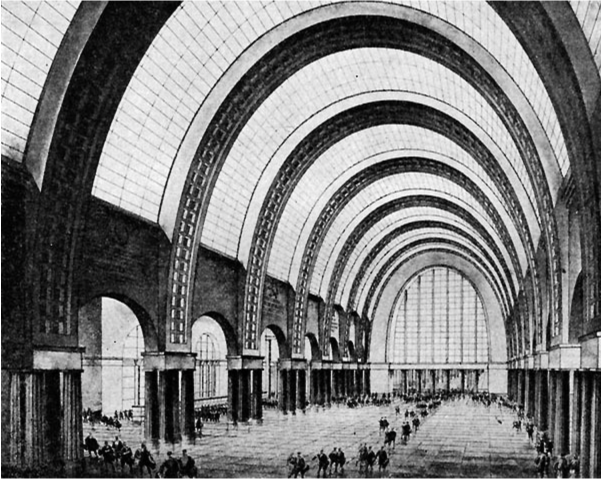
Gants Hill station in Ilford, designed by Charles Holden adapted from a design by Ivan Fomin, bares the scars of the Constructivist movement being clamped down on by the Stalinist regime.
Gillian Wise, born in Ilford, developed a career as an artist inspired by Russian constructivist art. She would even travel on a British government grant to research Russian constructivism in the country itself.
Only after this trip to Russia does Wise give up being a Constructivist artist and move on to join the Systems group.
I’m not saying that architectural ghosts haunted Gillian Wise as a child until she was able to exorcise them in the country from which they originated but…I am saying that.
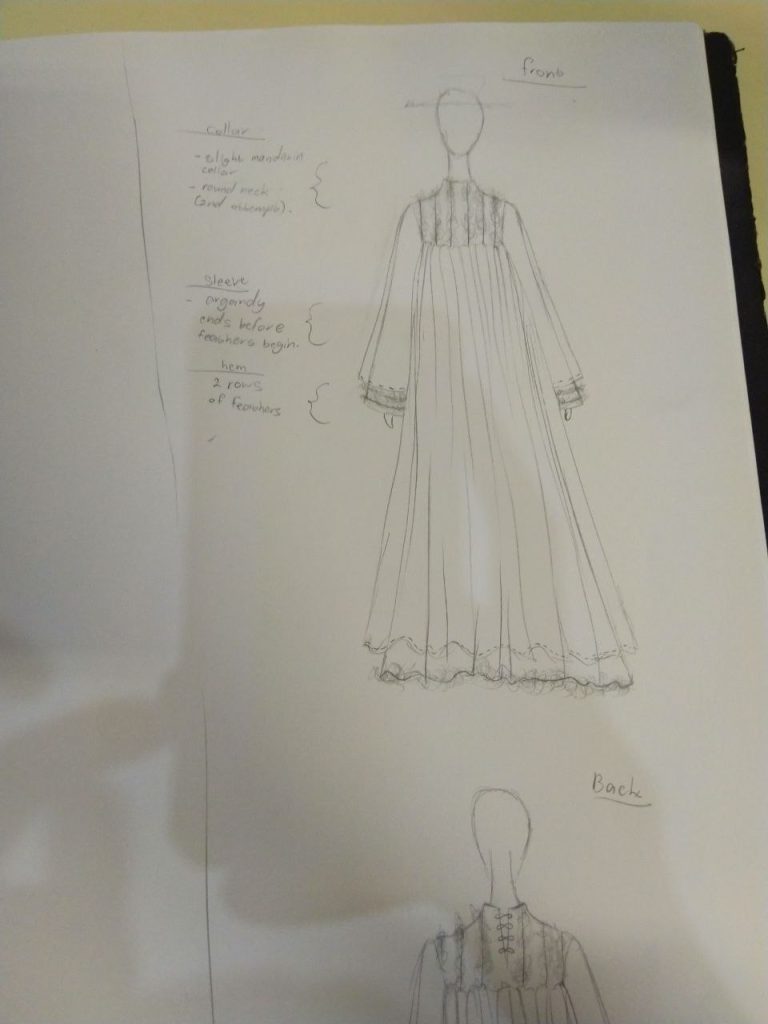
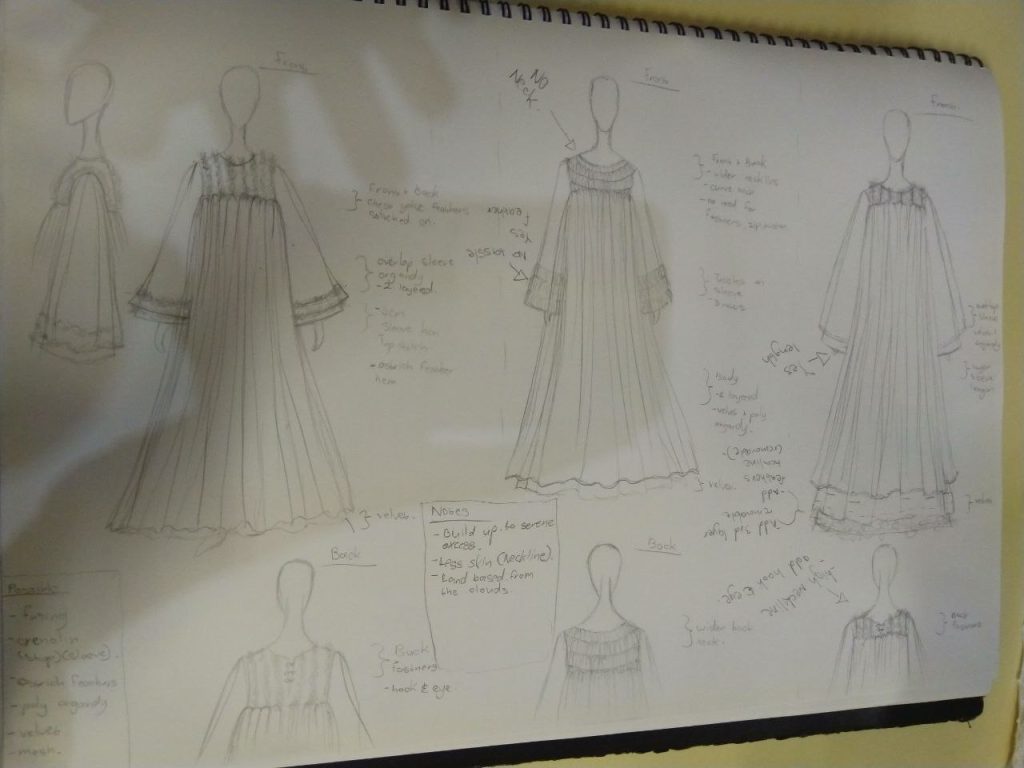
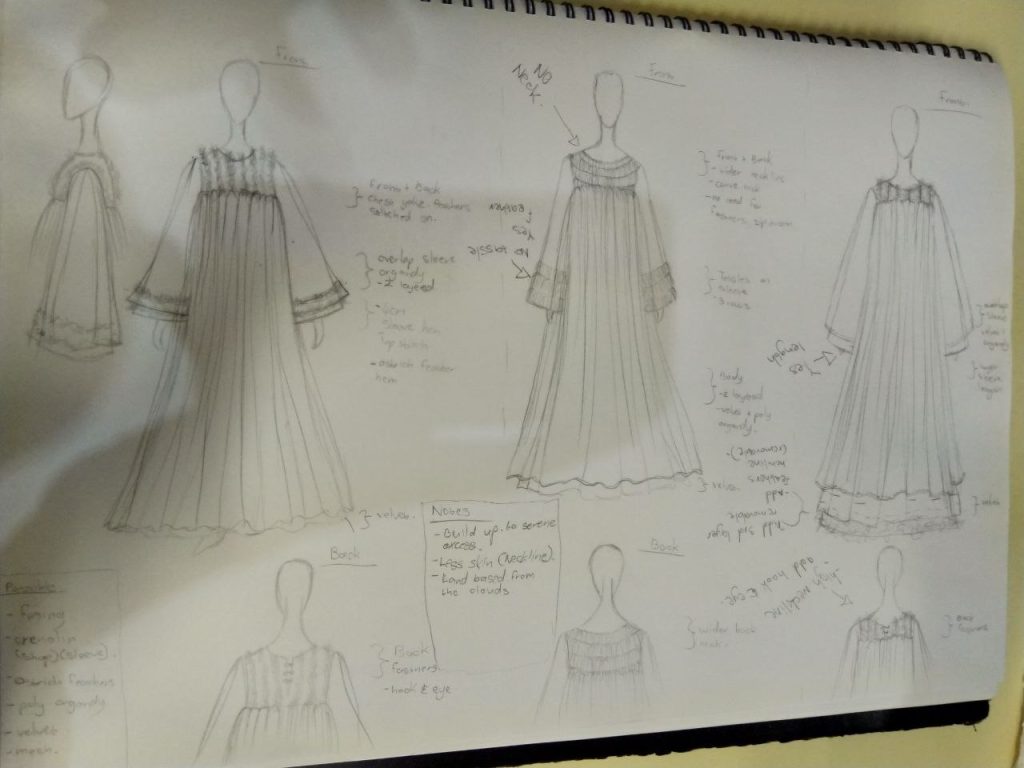
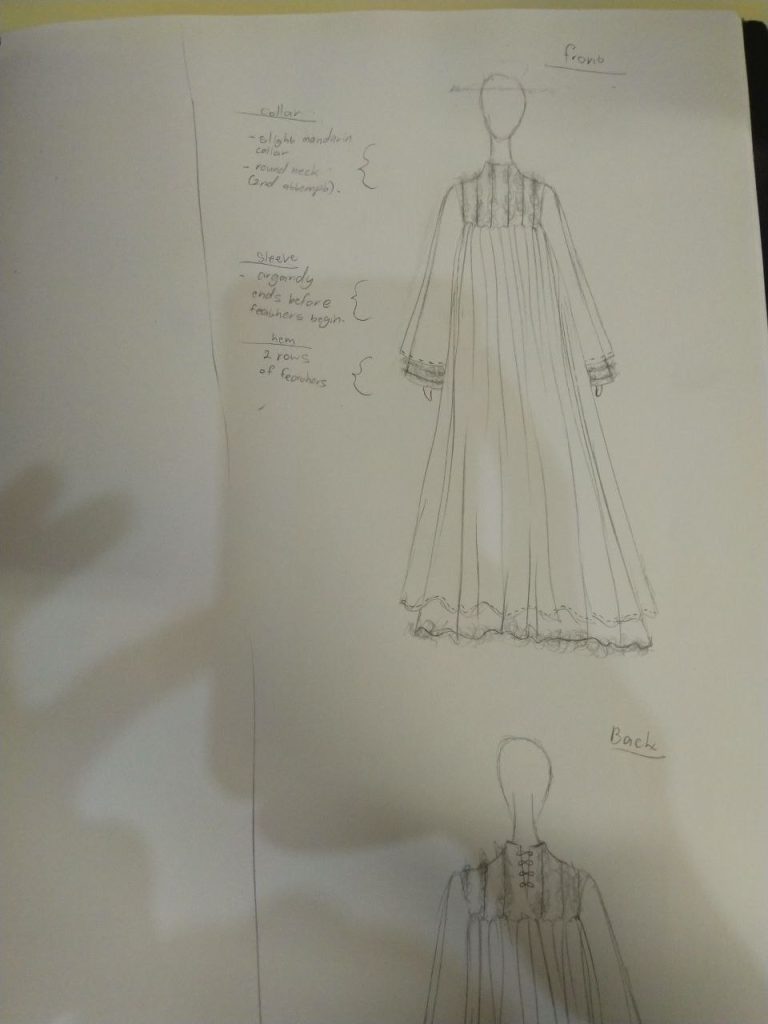
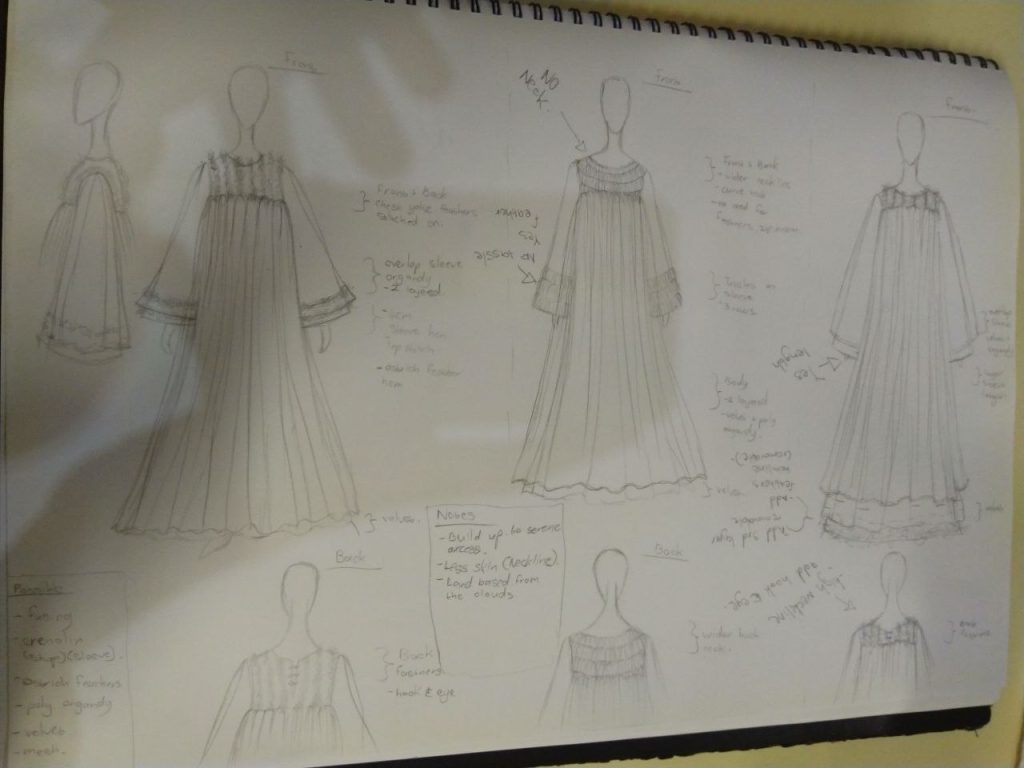

As a way of communicating and accessing divine vitality, anointed Garments become a token, and their symbolism is vital to the experience of creating rituals. It is not only representation but the surface/platform for the divine to be present within the fabric and in this plane. These garments facilitate becoming a vessel for the creation of a brand new universe.
How do I create an anointed garment? Colour is key. Colour communicates various meanings in this process, white is the colour of the garment I am creating. White represents innocence, purity, light and authority. Creating anointed garments requires personal cleansing rituals, prayer/meditation, and the offering of self. As part of this residency, I will become the mediator for a transgender deity, and white is the colour called forth.
I began the process with a collaborator to design and create a garment for the mediator/vessel here on earth. These are the current sketches of the garment. Upon completion, it will be offered to the deity and prayed for.
This Valentino show served as a form of inspiration. These Garments are other worldly. I enjoyed watching this show.